Integrate Google Gemini Chat Model with 1000+ apps and services
Unlock Google Gemini Chat Model’s full potential with n8n, connecting it to similar AI apps and over 1000 other services. Automate AI workflows by integrating, training, and deploying models across various platforms. Create adaptable and scalable workflows between Google Gemini Chat Model and your stack. All within a building experience you will love.

Create workflows with Google Gemini Chat Model integrations
0 integrations
Google Sheets
HTTP Request
Gmail
OpenAI
Slack
Telegram
Airtable
Google Drive
Microsoft Excel 365
Notion
Supabase
Discord
Postgres
MySQL
GitHub
Google Calendar
MongoDB
Microsoft SQL
OpenWeatherMap

GraphQL
HubSpot
X (Formerly Twitter)
Mautic
Baserow
Redis
Pushover
SendGrid
Jira Software
ClickUp
Trello
AWS S3
Twilio
Todoist
Pipedrive
Nextcloud
Microsoft Outlook
Mattermost
Facebook Graph API
WooCommerce
NocoDB
Google Docs

S3
Spotify
ActiveCampaign
MQTT
Home Assistant
WhatsApp Business Cloud

Google Contacts

YouTube
RabbitMQ
RocketChat
TheHive
Salesforce
Microsoft Teams
Mailgun

Matrix
Dropbox

Google Cloud Firestore
Mailchimp
Asana
Wordpress

Gotify
Mailjet
Elasticsearch
Google BigQuery
Stripe
Microsoft OneDrive
Monday.com
CoinGecko
Zendesk
APITemplate.io

Shopify

Line
AWS Lambda
Kafka

NASA
GitLab
Brevo
Customer Datastore (n8n training)
Microsoft To Do
Pushbullet
AWS SES
Webflow
Odoo
SeaTable

Phantombuster
Bubble
Google Tasks
AWS DynamoDB
DeepL
Google Analytics
Coda
Zoho CRM

Google Translate
Google Chat
Clockify
Raindrop
Zoom
Snowflake
Cortex
Grist
Dropcontact
Lemlist
Strapi
Bitly
ERPNext
Google Slides
Wise
Google Workspace Admin

Yourls

Philips Hue
Xero
AWS SNS
Freshdesk
UptimeRobot
One Simple API
Ghost
Zulip

Pushcut
QuickBooks Online
Wekan
Customer.io
Zammad
Metabase
Jenkins
PagerDuty
Customer Messenger (n8n training)
urlscan.io

Hacker News
Linear
MailerLite

FileMaker

Sendy
seven
Taiga

Harvest
Mandrill
Mindee
AWS SQS

Keap
Google Cloud Realtime Database
Grafana
Onfleet
Discourse
Strava

Medium
Magento 2

Box

Bannerbear
ConvertKit
HighLevel
ServiceNow
Invoice Ninja

Google Cloud Natural Language

uProc
AWS Transcribe
Help Scout
MessageBird
TimescaleDB
Sentry.io

QuestDB
AWS Textract
Splunk

BambooHR
Segment
Intercom
Google Cloud Storage
PostBin
Vonage
Plivo

Rundeck
Adalo
Clearbit
AWS Comprehend
Google Perspective

Quick Base

SIGNL4

Peekalink

Webex by Cisco

Paddle
Freshservice
DHL
AWS Rekognition
Cockpit
HaloPSA
Google Ads
Oura
Marketstack

Monica CRM

Contentful
Autopilot
MISP
Freshworks CRM
Kitemaker
MSG91

Beeminder
Action Network

Agile CRM
Microsoft Graph Security
Orbit
E-goi
Emelia

Hunter
PostHog

CrateDB

LingvaNex
Affinity

Chargebee
PayPal
Bitwarden

Automizy
AMQP Sender
KoBoToolbox
Demio
GoToWebinar
Mocean

Iterable
AWS Certificate Manager

Twist

SyncroMSP

Salesmate

Disqus
Google Books
Microsoft Dynamics CRM
ProfitWell
SecurityScorecard
Venafi TLS Protect Cloud
Cloudflare
Tapfiliate
Netlify

GetResponse
AWS ELB
CircleCI
Humantic AI

Stackby
Venafi TLS Protect Datacenter
Elastic Security

Spontit
Flow

Twake

Brandfetch

Uplead

Unleashed Software
Drift

TravisCI
Copper

OpenThesaurus
Netscaler ADC
Vero
Storyblok
Mailcheck
Npm
QuickChart
Perplexity
Microsoft Entra ID
Mistral AI
JWT
Azure Storage
LoneScale
Gong
Okta
Jina AI
Google Business Profile
Microsoft SharePoint
TheHive 5
Azure Cosmos DB
Oracle Database
AWS Cognito
Ldap
Airtop
AWS IAM
crowd.dev
DeepSeek Chat Model
Autobound
AssemblyAI
Greip
PDFMonkey
Outscraper
awork
YepCode

Cloudinary
Apify
Oxylabs AI Studio

AlienVault

Carbon Black
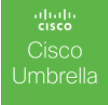
Cisco Umbrella
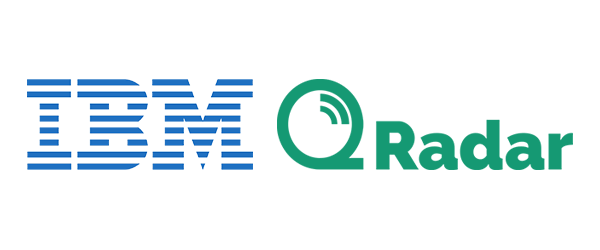
QRadar

Kibana

ZScaler ZIA
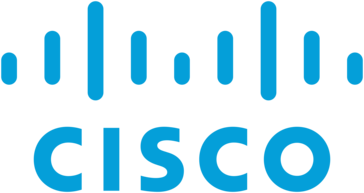
Cisco Secure Endpoint
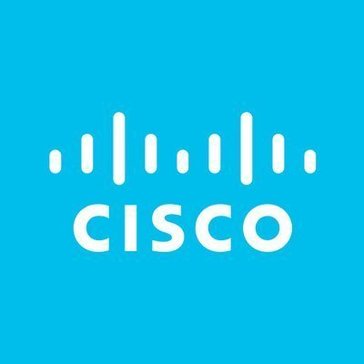
Cisco Meraki

Fortinet FortiGate

Browse AI

BugReplay

Imperva WAF
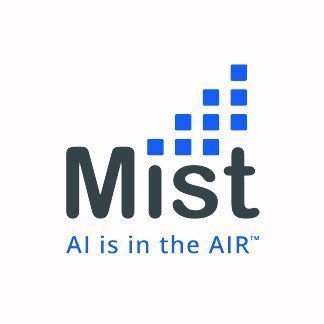
MIST
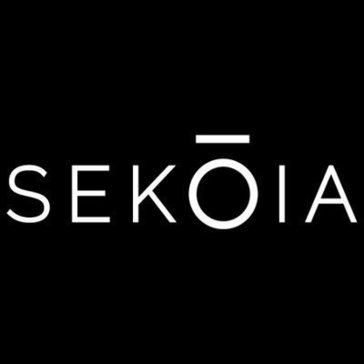
Sekoia

Miro

LeadBoxer

F5 Big-IP
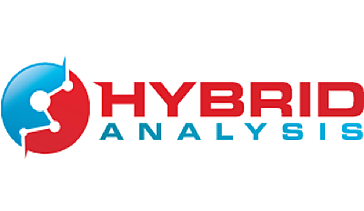
Hybrid Analysis

Mem
Trellix ePO

OpenCTI
Formstack Documents

IdealSpot

Auth0 Management API
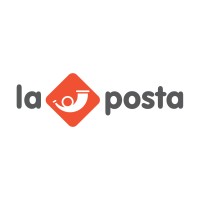
Laposta

Microsoft Azure Monitor

Synthesia

SMS Magic
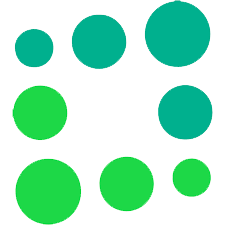
Totango

Myphoner

Radar
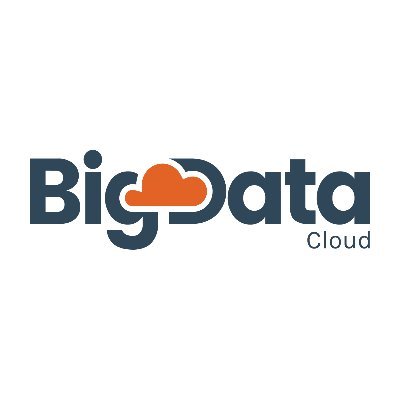
Big Data Cloud

ChartMogul
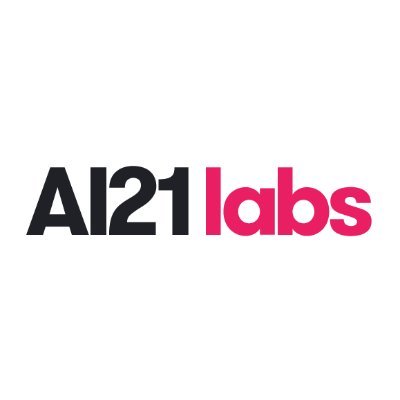
Studio by AI21 Labs

Docparser

Gumroad

Foursquare

Sifter

Snipcart
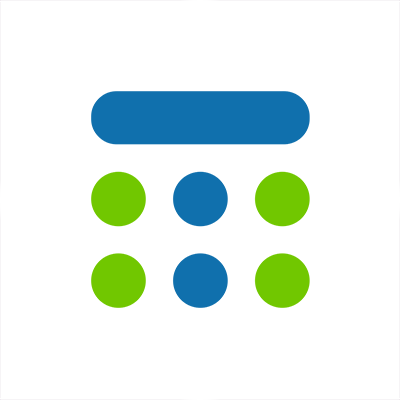
Team Up

Planyo Online Booking

Botbaba

Blockchain Exchange

iAuditor by SafetyCulture
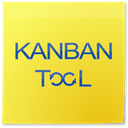
Kanban Tool

Float
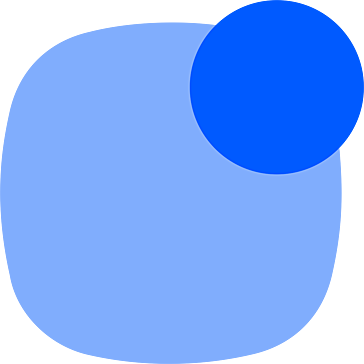
Reply.io

Mailmodo

Ritekit
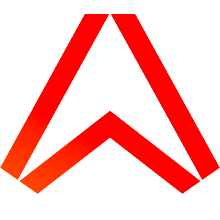
Ably
Product Hunt
Caspio

Reply

Missive
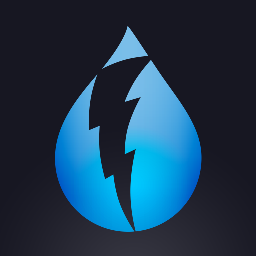
DarkSky API

Marketplacer

ecwid

GoDaddy

Handwrytten

Mixpanel

Confluence

SuiteDash

Nozbe Teams

Formdesk

Workast

Canvas

Landbot

Klaviyo

Order Desk

Survicate

CleverReach
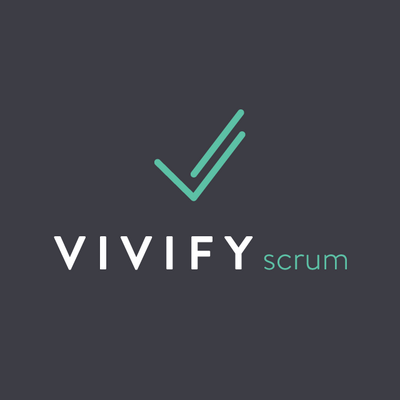
VivifyScrum
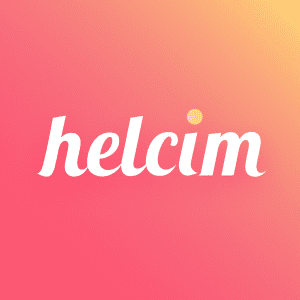
Helcim

Nusii Proposals

Spondyr

Unisender

Papyrs

Snapdocs


ChargeOver

Verifalia

Chatrace

Tilda

ApiFlash

Daffy

Cloud Convert

Imgur
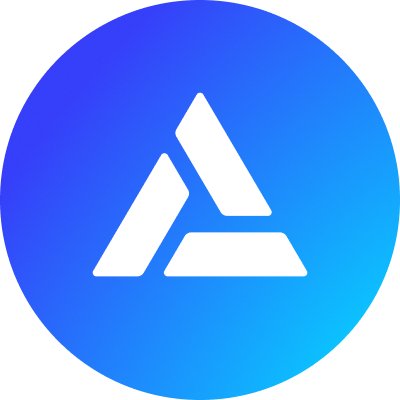
Alchemy

Crisp

AdRoll
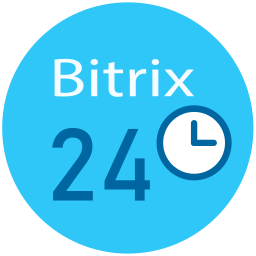
Bitrix24

Mav

Gender API

Zoho Desk

Gitea

ShipStation

Occasion

Docupilot
Headless Testing

RAWG Video Games Database

Linkish

Let's Enhance

Benchmark Email
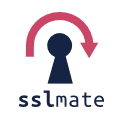
SSLMate — Cert Spotter API

Hugging Face

WuBook RateChecker

Bandwidth
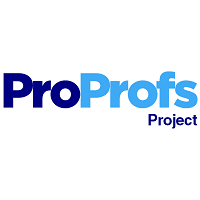
Project Bubble (ProProfs Project)

Accredible

TinyURL

Simplero

Gatekeeper

Smaily

Giphy

Miestro
ScrapeNinja

BunnyCDN

WebinarJam
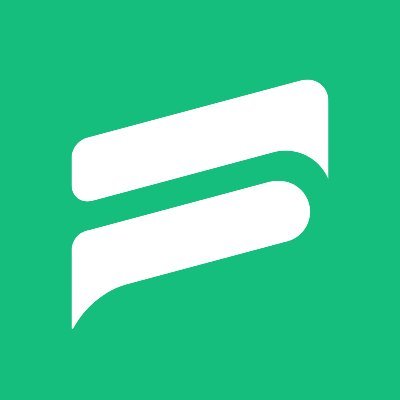
Fluent Support

Harry Potter API

Trengo

SportsData

Dokan
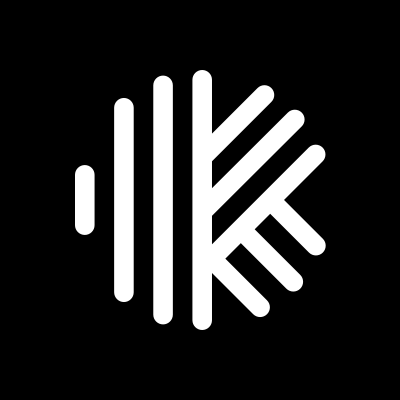
Karbon

Amilia
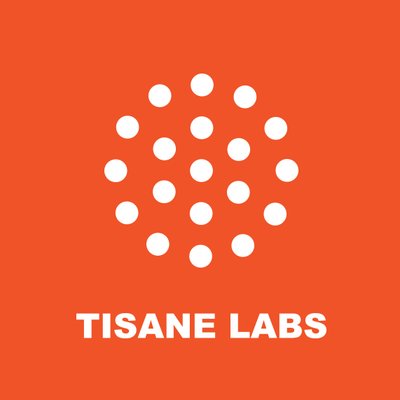
Tisane Labs

SimpleHash

Linode

Active Trail

Launch27

Teamgate
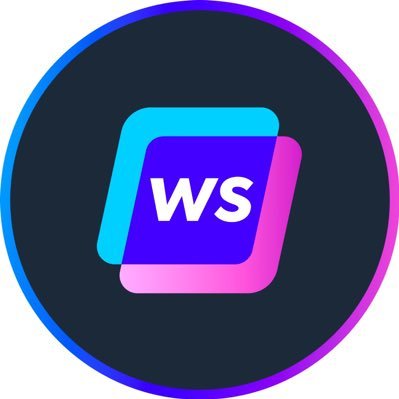
Writesonic

UpKeep

Instabot

Nightfall.ai

Datarobot

InfluxDB Cloud
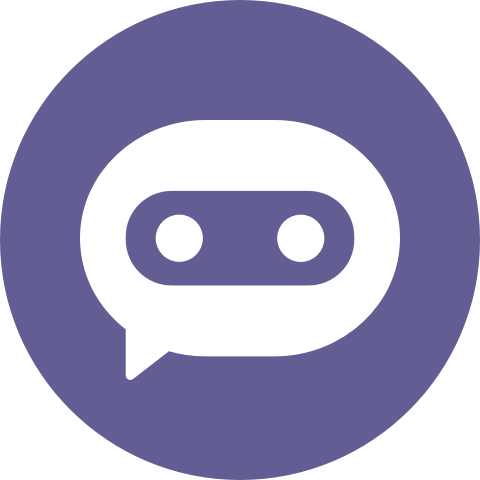
Botstar

WOXO

IdealPostcodes

ConvertAPI

Teamdeck

Zoho Books

ClickSend SMS
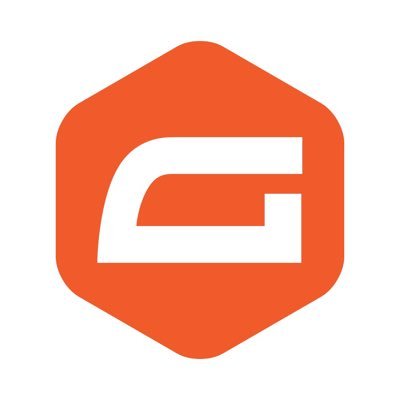
Gravity Forms

Brex
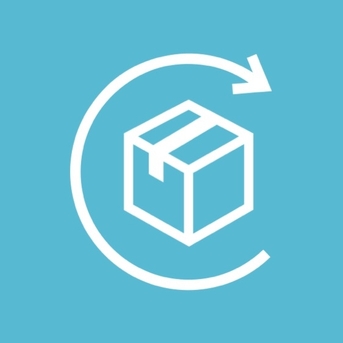
ReCharge
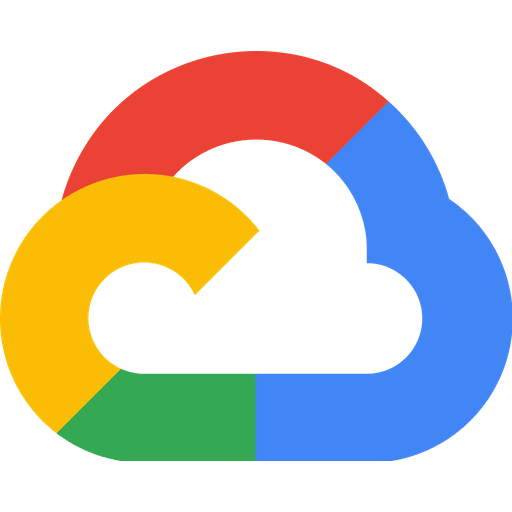
Google Cloud
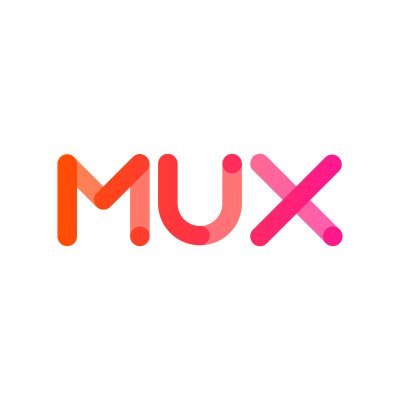
Mux

Metatext.AI Inference API

Mx Toolbox

Klazify

Supportivekoala

Thankster

Short.io
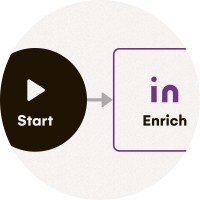
LaGrowthMachine
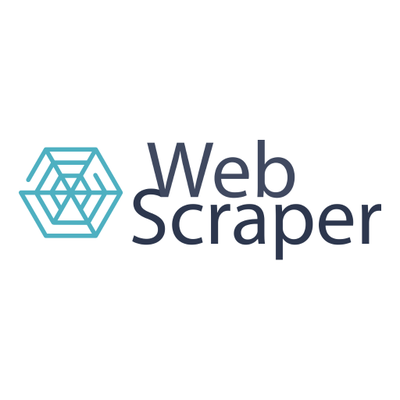
WebScraper.IO
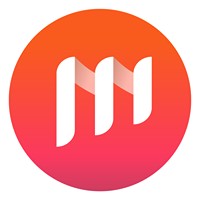
Mailify
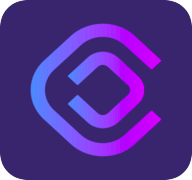
Cloudlayer

Guru

GoCanvas

Dock Certs

DeTrack

Free Dictionary

quentn
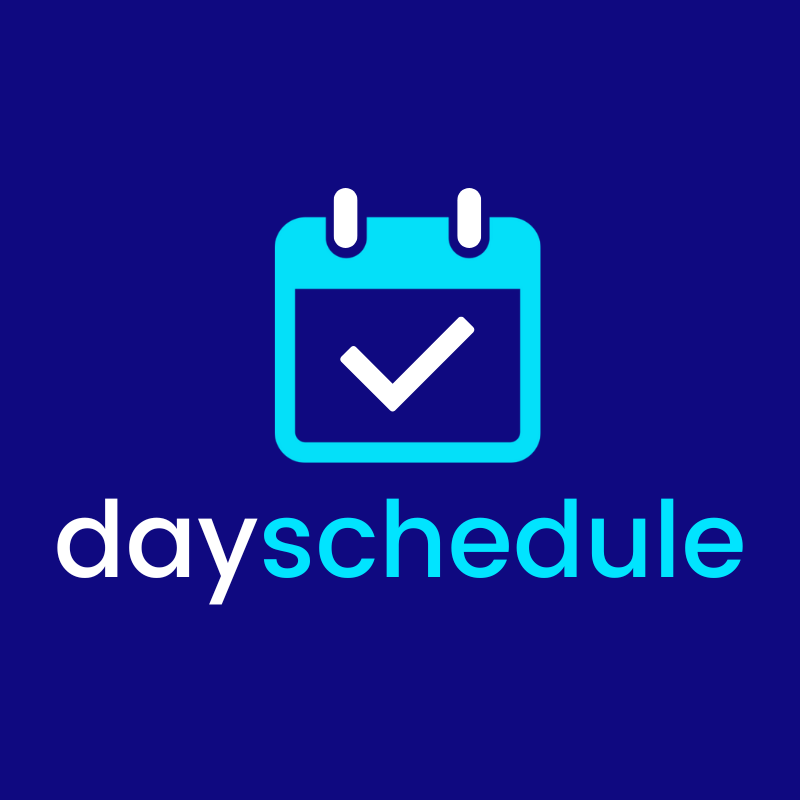
DaySchedule

SurveySparrow

Accelo

Yodiz

ShipHero

Ortto
3Scribe
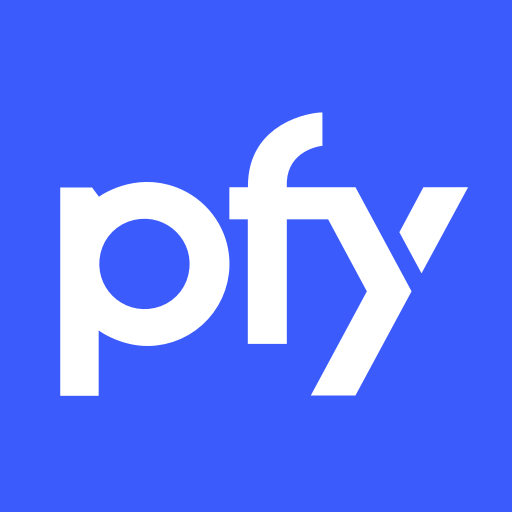
Pipefy
Crowdin

Gupshup

7todos

Badger Maps

TD Ameritrade
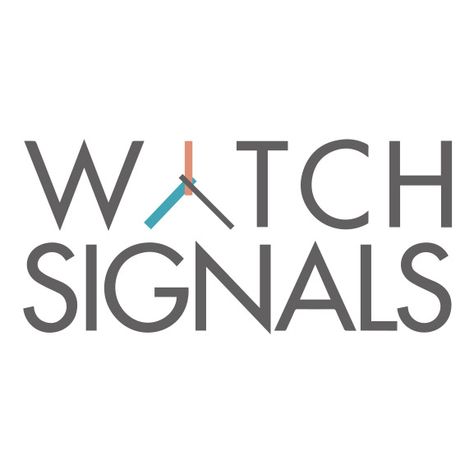
WatchSignals

ISN

Corsizio
Mastodon

Forms On Fire

Accuranker

Rewardful

Amazon

Plecto
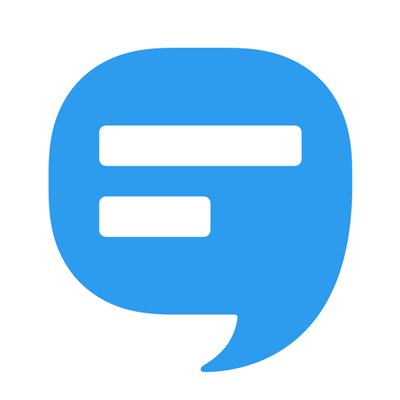
SimpleTexting

Deepgram

LIME Go

SimpleKPI

Formsite

TurboHire

TalentLMS
Capsule
Envoy

Pirate Weather

Platform.ly

Textgain

Salesmsg

Mews

LiveAgent

College Football Data
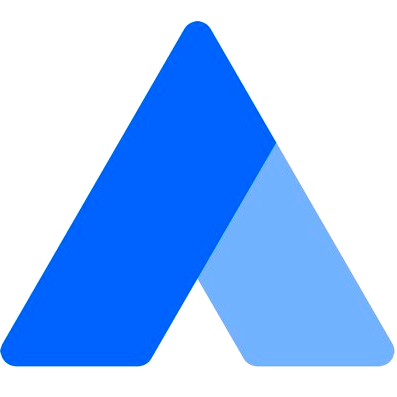
Acquire

KnowBe4

Cloze

PaperForm
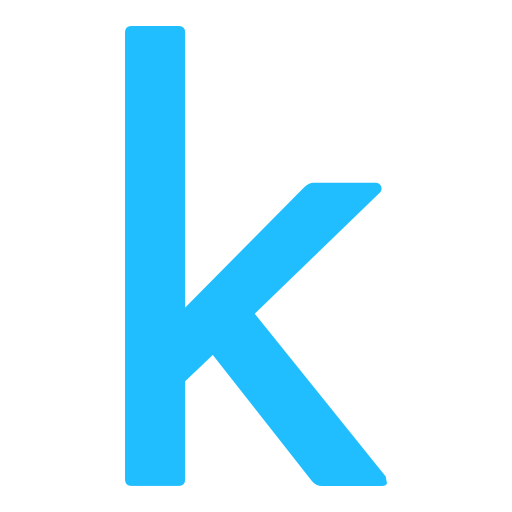
Kaggle

Switchboard

Zonka Feedback

MoonClerk

Copy.ai

Qualaroo

Unbounce

HUB Planner
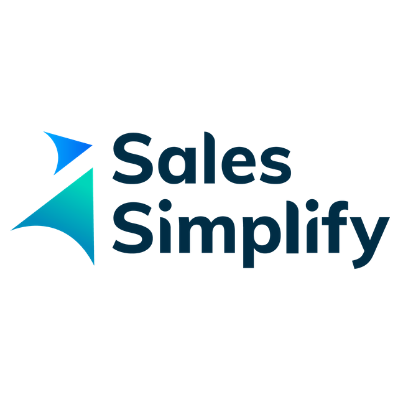
Sales Simplify

Signaturit

Mailersend

DocsBot AI
Omniconvert

GetScreenshot

Focuster

Esendex

Databox

Sierra Interactive

Breezy HR

Relink - URL Shortener

Thrivecart
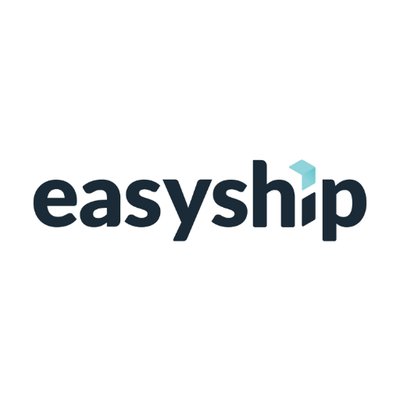
Easyship

HeySummit

AirNow

Planview Leankit
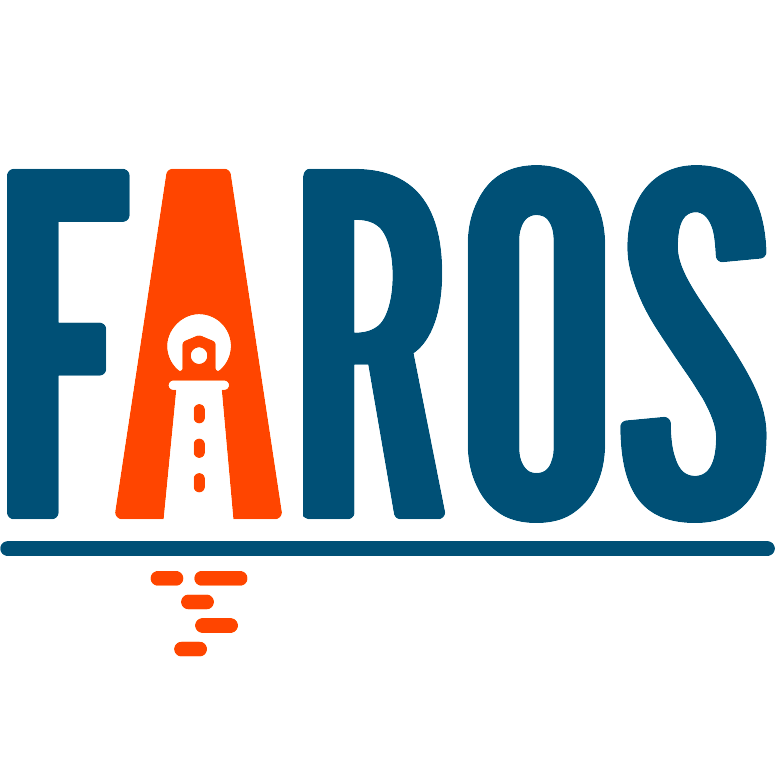
Faros

Lusha
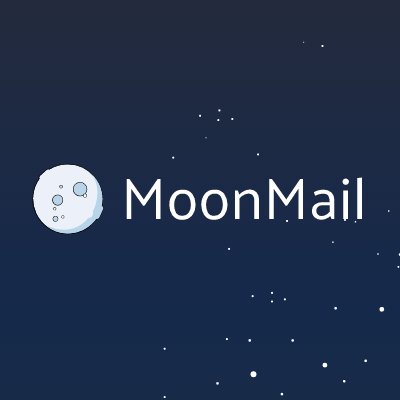
MoonMail

SMS-IT

SwagUp
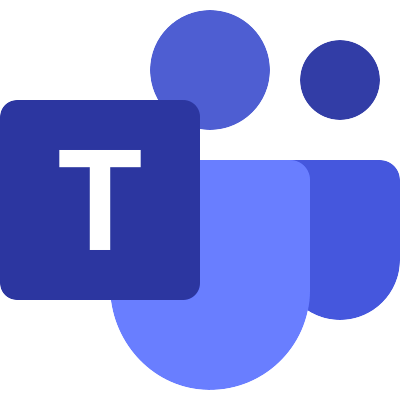
Microsoft Teams Admin
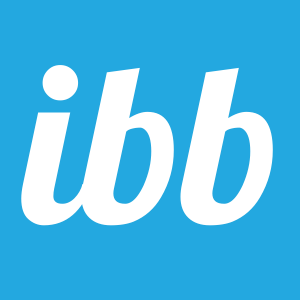
imgbb

Datumbox

SmartReach

Cisco Webex

Freshping

Chargify
Pivotal Tracker

Fitbit

Marketing Master IO
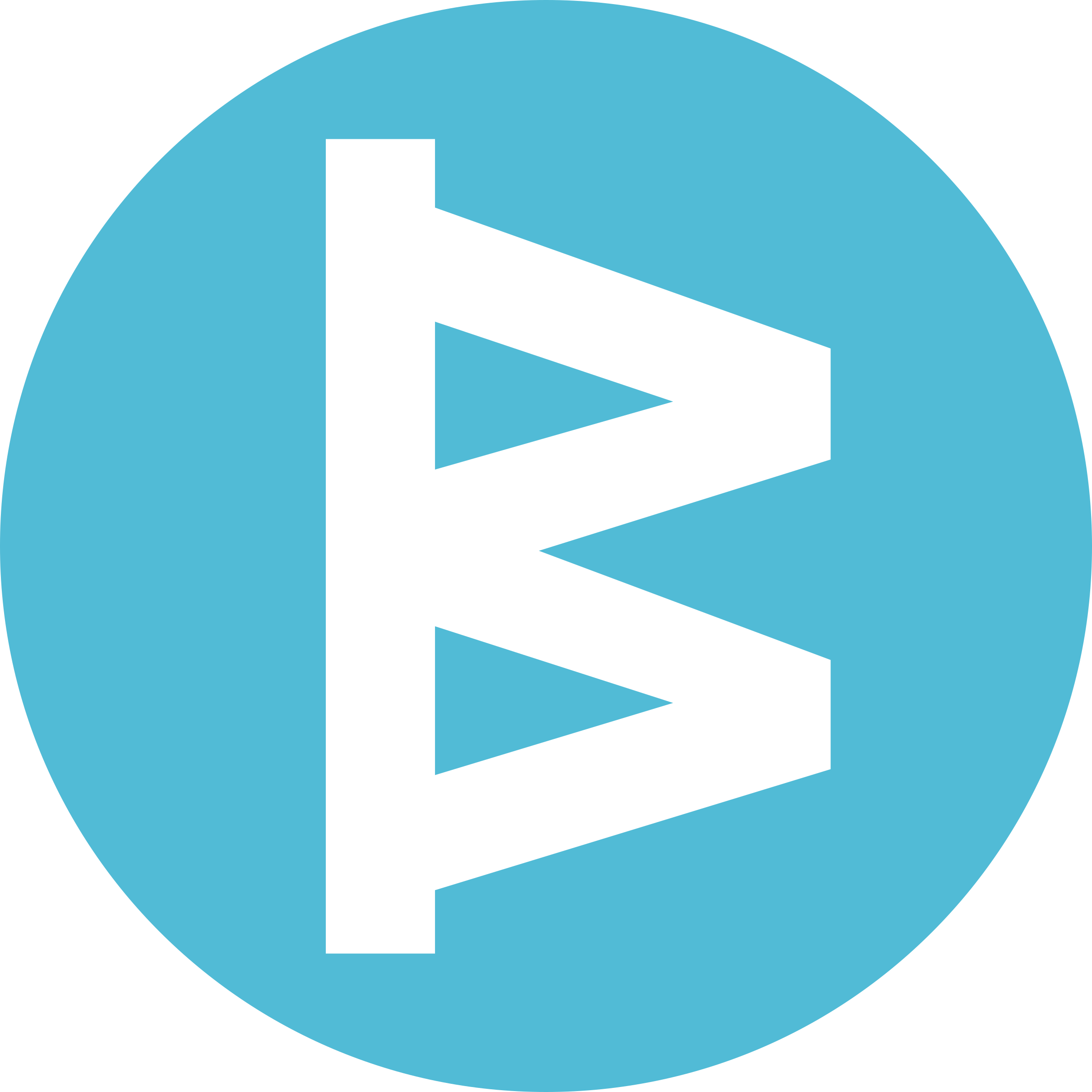
Workboard

Firmao

SnatchBot

RD Station CRM

DigiCert

Sitecreator.io
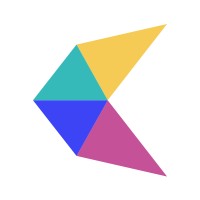
CalendarHero

Airbrake

Pusher

Seamless AI

Read AI

Grain

Descript

Fathom

Google AI Studio (Gemini)

HeyGen

TrackVia

Supernormal

Personal AI

Airparser

Dante AI

Relevance AI

TalkNotes

Kraftful

Wonderchat

Browserless

Voicit

Enterpret

AccurAI

CustomerIQ

Google Vertex AI

Botsonic

Superpowered

Blaze

Vowel

Sembly AI

Chatsonic

Predis.ai

My AskAI

echowin

FastBots

The Leap

Nyota

Alphamoon

EmbedAI

Wondercraft

DialZara

Gali

ParsePrompt

Nyckel

Brandblast

Cradl AI

Brain Pod AI

Droxy

OmniMind

Botifier
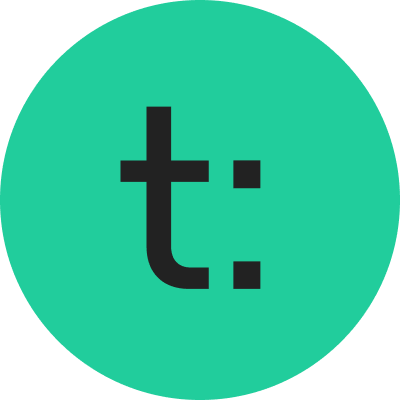
Teachable

Formcarry

ThoughtfulGPT

RoboResponseAI

DocuWriter

Faraday

GPTea

Teknoir

CraftDraft

Convi

Simpleem

RealPhoneValidation

Nuclia

Empsing

Sharly AI

Cloozo

Diddo AI

Knack

Maverick

Google Tables

WizyChat

Salesmaa

bot9

Ninox

AITable.ai

Trevor.io

On2Air

Fusioo

Marcom Robot

InfoLobby

Autom

TiDB Cloud

Clarifai

Vimeo

Pitchly

Solve Data

Sales.Rocks

ApptiveGrid

ScreenshotOne

Passcreator

IndustrySelect

Grid

Persio

IP2Location

LaunchDarkly

HasData

BugHerd

Keygen

Bugpilot

Data Soap

Ipregistry

Gleap

Localazy

ZenRows

TestMonitor

BigML

Lighthouse

BugBug

Ybug

Bugfender

Lokalise

Transifex

Kadoa

Venly

Cryptolens

Alerty

Rootly

KEYZY

BrowserStack

LambdaTest

Chekhub

NMKR

Flotiq

Spike

Evolphin Zoom

Impira

Tuulio

Pulsetic

Relysia

Robolytix

Starton

Diffy

Lucidchart

Phrase

Flagship

Eartho

Dasha

Toket

CloudBoost

Cloud 66

LoginRadius

Jasper

OffAlerts

CloudShare
Luciq (formerly Instabug)

BLOOCK

Cronly

DevCycle

Rollbar

Tierion

Engati

ncScale
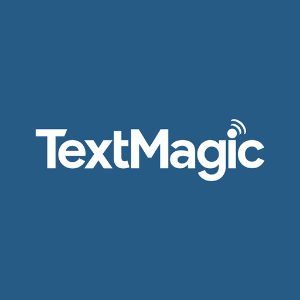
TextMagic

BugShot

AbuselPDB
Sellix

Evervault

Reverse Contact

TextKit

Databricks

Eden AI

Growbots

Claude

AltText.ai

PromptHub

IntakeQ

Jama

Adobe

Apiary

Codefresh

Buildkite

TextCortex AI

Prospe AI

The Customer Factor

Timetonic

Clappia

elmah.io

Code Climate

Domo

PractiTest

Botium Box
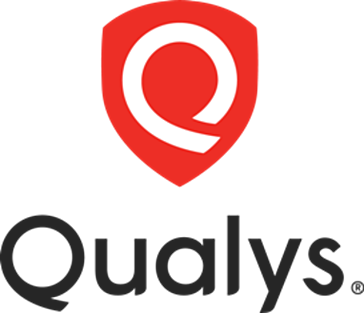
Qualys

Leadpops

Invoiced
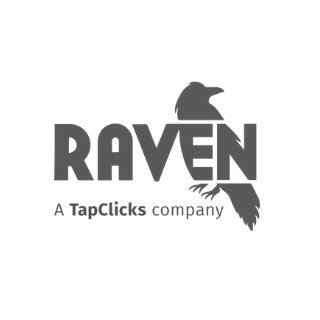
Raven Tools

OPN (formerly Omise)

Nanonets OCR
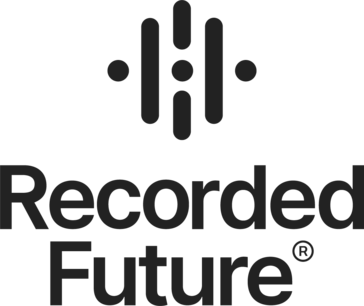
Recorded Future

Better Proposals

Patreon
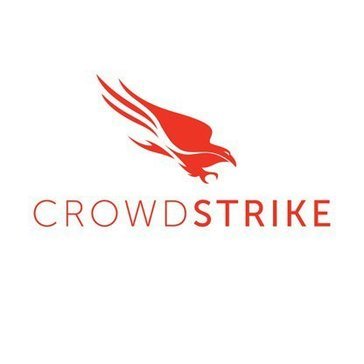
CrowdStrike

Shuffler

Datadog

Filescan

Iris Dfir
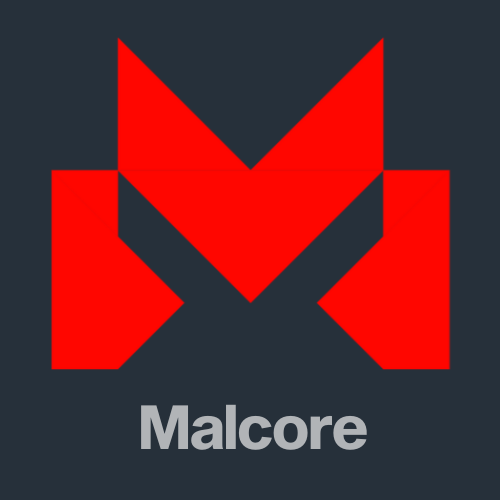
Malcore

Zabbix

Roboflow

Search And Save
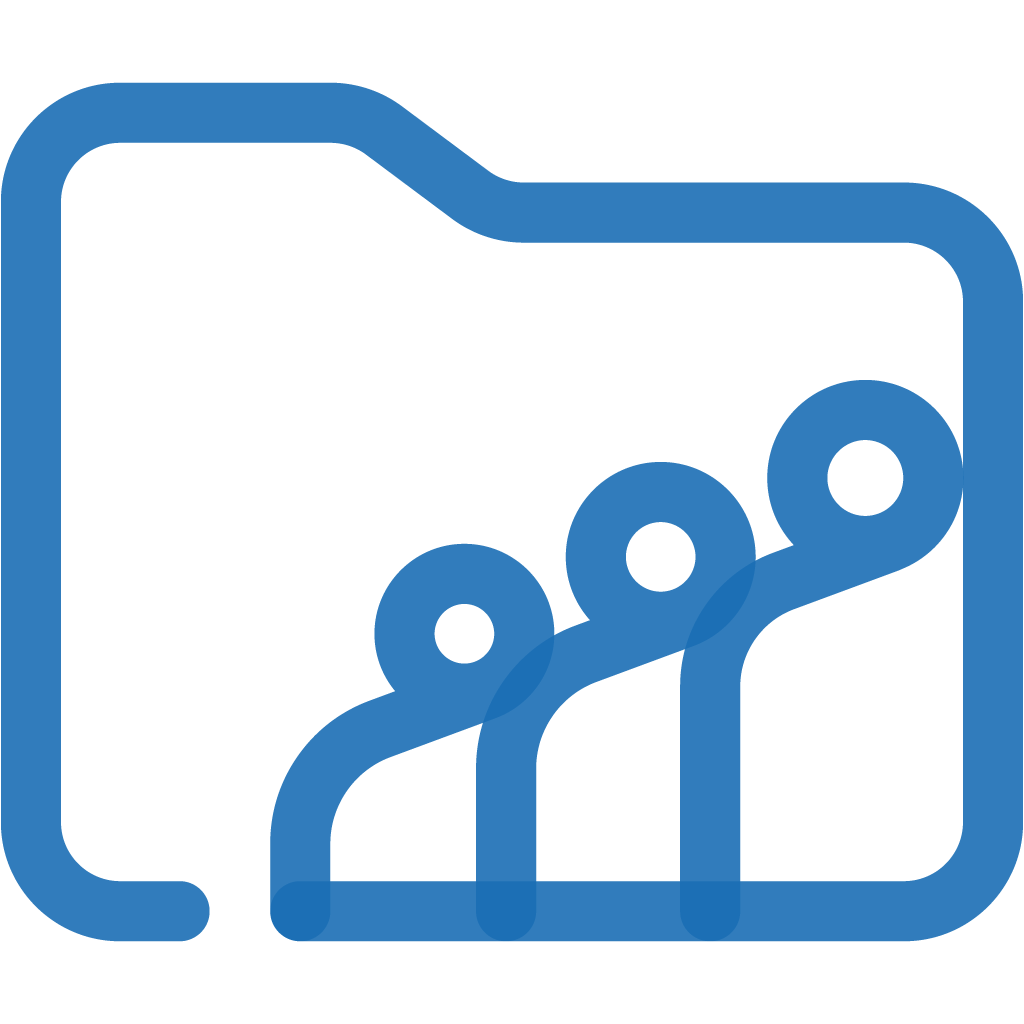
Zoho WorkDrive

Whal3s
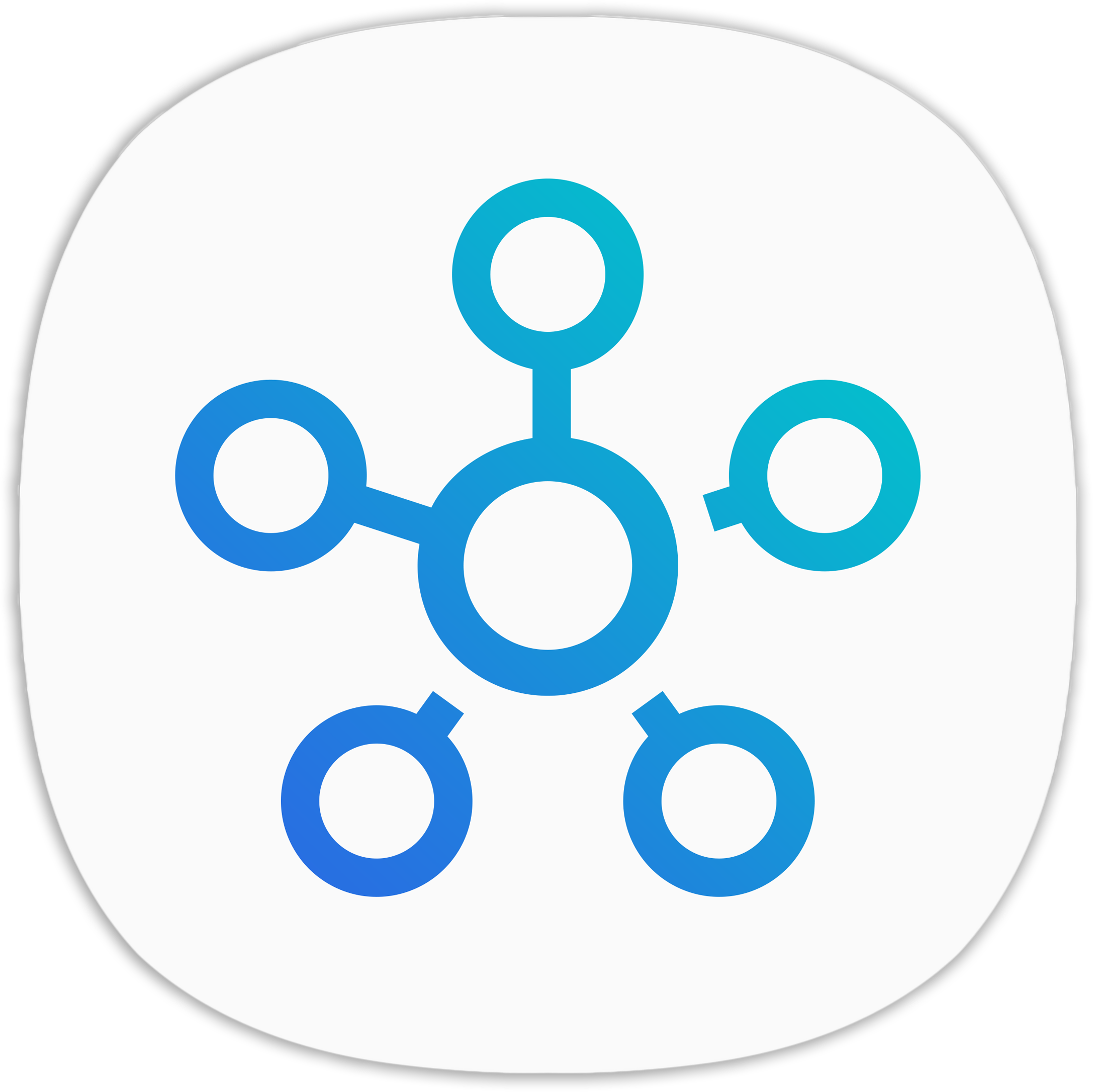
Samsung SmartThings

Syncly

Redash

Microsoft Entra ID (Azure Active Directory)

VirusTotal
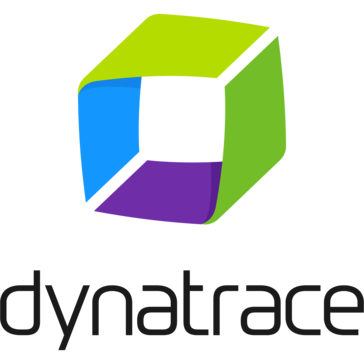
Dynatrace
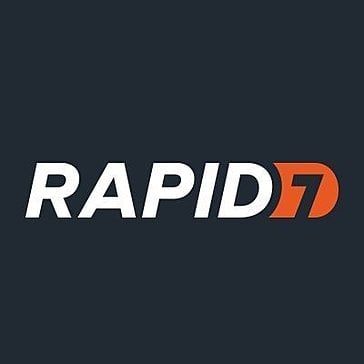
Rapid7 InsightVM

Big Cartel

Abstract

CrowdPower

BrandMentions

Chatbase
Calendly

Chaindesk

Waveline Extract

Draftable
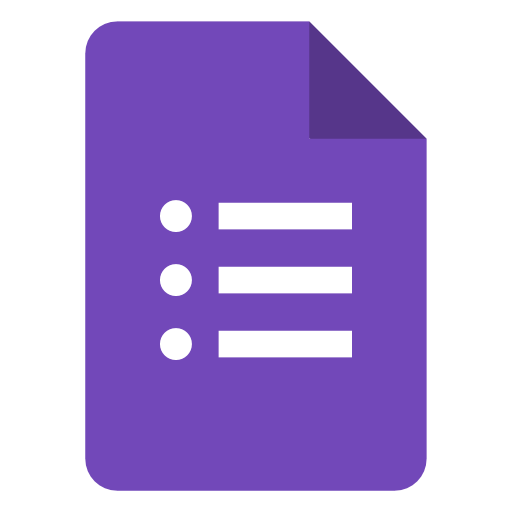
Google Forms

Confluent

Chatling

OCRSpace

Cody

SignRequest

Enormail

IPInfo

Microsoft Dynamics 365 Business Central API

Morph

Pinboard

Paymo

Passslot

Route4Me

Prodia

QuintaDB

Specter

Spydra
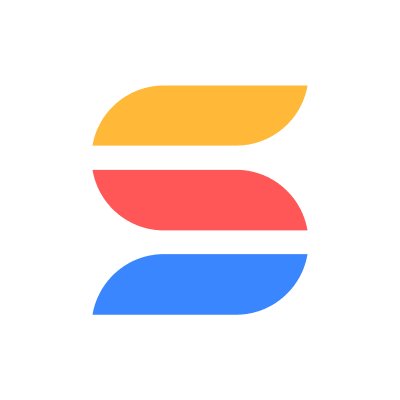
SmartSuite

Statuscake

FullContact

AnnounceKit

UserVoice

Token Metrics

WhatConverts

Woodpecker.co

SiteSpeakAI

Stammer.ai

Xtractly

Hansei

ChatMasters

Libraria

Retable

Omeda

SimpleLocalize

Ycode

Pinata

Crossmint

Ideta

Tuskr

One AI

ConfigCat

UptimeToolbox

ParseHub
Documentation
Popular ways to use the Google Gemini Chat Model integration
Build Your First AI Agent
✨🤖Automate Multi-Platform Social Media Content Creation with AI
RAG Chatbot for Company Documents using Google Drive and Gemini
AI-Powered Social Media Content Generator & Publisher
Respond to WhatsApp Messages with AI Like a Pro!
🤖 AI Powered RAG Chatbot for Your Docs + Google Drive + Gemini + Qdrant
Free AI Image Generator - n8n Automation Workflow with Gemini/ChatGPT
Customer Support WhatsApp Bot with Google Docs Knowledge Base and Gemini AI
Host Your Own AI Deep Research Agent with n8n, Apify and OpenAI o3
Proxmox AI Agent with n8n and Generative AI Integration
Build a Voice AI Chatbot with ElevenLabs and InfraNodus Knowledge Experts
Scrape any web page into structured JSON data with ScrapeNinja and AI
🤖 Build an Interactive AI Agent with Chat Interface and Multiple Tools
🤖 AI content generation for Auto Service 🚘 Automate your social media📲!
Automated AI Content Creation & Instagram Publishing from Google Sheets
AI Prompt Generator Workflow
Build a PDF Document RAG System with Mistral OCR, Qdrant and Gemini AI
AI Voice Chat using Webhook, Memory Manager, OpenAI, Google Gemini & ElevenLabs
✨ Vision-Based AI Agent Scraper - with Google Sheets, ScrapingBee, and Gemini
Lead Generation Agent
Build a Personal Assistant with Google Gemini, Gmail and Calendar using MCP
Extract text from PDF and image using Vertex AI (Gemini) into CSV
Automated YouTube Video Scheduling & AI Metadata Generation 🎬
🤖 Create a Documentation Expert Bot with RAG, Gemini, and Supabase
Nutrition Tracker & Meal Logger with Telegram, Gemini AI and Google Sheets
API Schema Extractor
Automate Image Validation Tasks using AI Vision
5 Ways to Process Images & PDFs with Gemini AI in n8n
Social Media Content Generator And Publisher | X, Linkedin
Generate AI-Powered LinkedIn Posts with Google Gemini and Gen-Imager
Generate Monthly Financial Reports with Gemini AI, SQL, and Outlook
Document Q&A Chatbot with Gemini AI and Supabase Vector Search for Telegram
Email Support Agent w/ Gemini & GPT fallback using Gmail + Google Sheets
🤖💬 Conversational AI Chatbot with Google Gemini for Text & Image | Telegram
CV Resume PDF Parsing with Multimodal Vision AI
AI-Powered RAG Workflow For Stock Earnings Report Analysis
🛠️ AI Prompt Maker
Transcribing Bank Statements To Markdown Using Gemini Vision AI
Extract & Transform HackerNews Data to Google Docs using Gemini 2.0 Flash
Build Your First AI Agent – Powered by Google Gemini with Memory
🤖 Build a Documentation Expert Chatbot with Gemini RAG Pipeline
Parse Incoming Invoices From Outlook using AI Document Understanding
Intelligent AI Digest for Security, Privacy, and Compliance Feeds
Automated Instagram Reels Workflow
🤖 Automate CV Screening with AI Candidate Analysis
Smart Email Auto-Responder Template using AI
AI content creation and auto WordPress publishing with Pexels API image workflow
Build an AI-Powered Tech Radar Advisor with SQL DB, RAG, and Routing Agents
Smart Email Responder Workflow using AI
Voice Agent for Dental Appointment Booking with Gemini AI
Easy Image Captioning with Gemini 1.5 Pro
Explore n8n Nodes in a Visual Reference Library
Resume Screening & Evaluation System with Gemini AI, Google Sheets & Drive for HR
AI-Powered RAG Document Processing & Chatbot with Google Drive, Supabase, OpenAI
Extract Invoice Data from Google Drive to Sheets with Mistral OCR and Gemini
Track AI Agent token usage and estimate costs in Google Sheets
Lead Workflow: Yelp & Trustpilot Scraping + OpenAI Analysis via BrightData
AI Agent: Scrape, Summarize & Save Articles to Notion (Gemini, Browserless)
AI Fitness Coach Strava Data Analysis and Personalized Training Insights
Automate YouTube Uploads with AI-Generated Metadata from Google Drive
AI-Powered Product Research & SEO Content Automation
🤖 Create Your First AI Agent with Weather & Web Scraping (Starter Kit)
High-Level Service Page SEO Blueprint Report Generator
📈 Receive Daily Market News from FT.com to your Microsoft outlook inbox
Query Google Sheets/CSV data through an AI Agent using PostgreSQL
Creating a AI Slack Bot with Google Gemini
AI Orchestrator: dynamically Selects Models Based on Input Type
Extract Text from Images with Telegram Bot & OCR Tesseractjs
AI Sales Agent with Telegram Approvals & Google Sheets Sync
News Research and Sentiment Analysis AI Agent with Gemini and SearXNG
Stock Market Daily Digest with Bright Data Scraping & Gemini AI Email Reports
Process Multiple Media Files in Telegram with Gemini AI & PostgreSQL Database
Auto-Publish Web Articles as Social Posts for X, LinkedIn, Reddit & Threads with Gemini AI
Create Custom PDF Documents from Templates with Gemini & Google Drive
Automatically Classify and Label Gmail Emails with Google Gemini AI
Summarise Slack Channel Activity for Weekly Reports with AI
Generate AI YouTube Shorts with Flux, Runway, Eleven Labs and Creatomate
Resume Screening & Behavioral Interviews with Gemini, Elevenlabs, & Notion ATS
Build and Update RAG System with Google Drive, Qdrant, and Gemini Chat
Automated Financial Tracker: Telegram Invoices to Notion with Gemini AI Reports
Generate & Send Spare Parts Price Quotes with Gmail, Sheets and Gemini AI
Perform SEO Keyword Research & Insights with Ahrefs API and Gemini 1.5 Flash
Automated Stock Sentiment Analysis with Google Gemini and EODHD News API
Bitrix24 AI-Powered RAG Chatbot for Open Line Channels
Screen Applicants With AI, notify HR and save them in a Google Sheet
LinkedIn Profile Extract and Build JSON Resume with Bright Data & Google Gemini
Automate LinkedIn Post Creation with Image using Google Gemini & DALL-E
Generate UGC Marketing Videos for eCommerce with Sora 2 and Gemini
Build Custom AI Agent with LangChain & Gemini (Self-Hosted)
Create Faceless Videos with Gemini, ElevenLabs, Leonardo AI & Shotstack
Scrape Google Maps by area & Generate Outreach Messages for Lead Generation
Personal Google Calendar & Reminder Bot on Telegram using Gemini & Whisper
Hacker News Throwback Machine - See What Was Hot on This Day, Every Year!
Visual Regression Testing with Apify and AI Vision Model
Auto-Generate & Post AI Images to Facebook using Gemini & Pollinations AI
Create Structured eBooks in Minutes with Google Gemini Flash 2.0 to Google Docs
Intelligent Web Query and Semantic Re-Ranking Flow using Brave and Google Gemini
WhatsApp RAG Chatbot with Supabase, Gemini 2.5 Flash, and OpenAI Embeddings
AI-Powered Candidate Shortlisting Automation for ERPNext
Turn BBC News Articles into Podcasts using Hugging Face and Google Gemini
Google Maps Business Scraper & Lead Enricher with Bright Data & Google Gemini
Stock Technical Analysis with Google Gemini
Automate Salon Appointment Management with WhatsApp, GPT & Google Calendar
Automate Etsy Data Mining with Bright Data Scrape & Google Gemini
LINE Chatbot with Google Sheets Memory and Gemini AI
Transform Long Videos into Viral Shorts with AI and Schedule to Social Media using Whisper & Gemini
Create Adaptive RAG Chat Agent with Google Gemini and Qdrant
🤖🧑💻 AI Agent for Top n8n Creators Leaderboard Reporting
Automate News Publishing to LinkedIn with Gemini AI and RSS Feeds
Auto-Generate YouTube Chapters with Gemini AI & YouTube Data API v3
Automated Weekly Google Calendar Summary via Email with AI ✨🗓️📧
Daily meetings summarization with Gemini AI
Adaptive RAG with Google Gemini & Qdrant: Context-Aware Query Answering
Learn Anything from HN - Get Top Resource Recommendations from Hacker News
Personal Portfolio CV Rag Chatbot - with Conversation Store and Email Summary
Document Analysis & Chatbot Creation with Llama Parser, Gemini LLM & Pinecone DB
Scrape Web Data with Bright Data, Google Gemini and MCP Automated AI Agent
Automated Law Firm Lead Management & Scheduling with AI, Jotform & Calendar
YouTube Video to AI-Powered Auto Blogging and Affiliate Automation
Generate Content Strategy Reports Analyzing Reddit, YouTube & X with Gemini
Convert PDF Documents to AI Podcasts with Google Gemini and Text-to-Speech
Doctor Appointment Management System with Gemini AI, WhatsApp, Stripe & Google Sheets
AI-Powered Product Video Generator (Foreplay + Gemini + Sora 2)
Generate Content Ideas with Gemini Pro and Store in Google Sheets
Google Search Engine Results Page Extraction and Summarization with Bright Data
Generate AI Images from Text Prompts with Gemini 2.0, Google Sheets & Drive
Travel Planning Assistant with MongoDB Atlas, Gemini LLM and Vector Search
Google Trend Data Extract & Summarization with Bright Data & Google Gemini
Automated Discord Chatbot for chat Interaction in channel using Gemini 2.0 Flash
Build a WhatsApp Assistant with Memory, Google Suite & Multi-AI Research and Imaging
Extract Pay Slip Data with Line Chatbot and Gemini to Google Sheets
Discover Business Leads with Gemini, Brave Search and Web Scraping
Adaptive RAG Strategy with Query Classification & Retrieval (Gemini & Qdrant)
Generate & Schedule Social Posts with Gemini/OpenAI for X and LinkedIn
Automated Reservation System with Telegram, Google Gemini AI, and Google Sheets
Text-to-Image Generation with Google Gemini & Enhanced Prompts via Telegram Bot
🛠️ Auto n8n Updater (Docker)
Automated Resume Scoring with Gemini LLM, Gmail and Notion Job Profiles
Personalise Outreach Emails using Customer data and AI
AI-Powered Auto-Generate Exam Questions and Answers from Google Docs with Gemini
AI-Powered Personal Finances Manager with Gemini, Telegram & Google Sheets
Generate AI Prompts with Google Gemini and store them in Airtable
Extract spending history from gmail to google sheet
Auto-Generate SEO Articles in WordPress with Gemini AI and OpenAI Images
Chat with Your HubSpot Data
Extract Amazon Best Seller Electronic Info with Bright Data and Google Gemini
Automate AI Video Creation & Multi-Platform Publishing with Gemini & Creatomate
Smart Gmail Cleaner with AI Validator & Telegram Alerts
Automated Viral Content Engine for LinkedIn & X with AI Generation & Publishing
AI YouTube Playlist & Video Analyst Chatbot
Multilingual Voice & Text Telegram Bot with ElevenLabs TTS and LangChain Agents
AI Client Onboarding Agent: Auto Welcome Email Generator
Summarize youtube videos from transcript for social media
Create YouTube Shorts Scripts from Video Links with Gemini AI and Telegram
Build a RAG System with Automatic Citations using Qdrant, Gemini & OpenAI
Generate AI Songs + Music Videos Using Suno API, Flux, Runway and Creatomate
#️⃣Nostr #damus AI Powered Reporting + Gmail + Telegram
Create AI-Ready Vector Datasets for LLMs with Bright Data, Gemini & Pinecone
E-Commerce Assistant for Shopify & WooCommerce with GPT-4o, Gemini & RAG
Automated LinkedIn Job Hunter: Get Your Best Daily Job Matches by Email
Generate Video Ads with Gemini 2.5 Flash Images & FAL WAN Animation
Daily AI News Briefing and Summarization with Google Gemini and Telegram
Analyze Meta Ad Library Video Ads with Gemini and store results in Google Sheets
Process Documents with Recursive Chunking using Google Drive, OpenAI & Gemini RAG
AI Email Reply Based on HubSpot Data + Slack Approval
Build a Multi-Modal Telegram AI Assistant with Gemini, Voice & Image Generation
🤖 AI-Powered Prompt Enhancement Assistant using Google Sheets
AI-Powered Automated Outreach with Scheduling, Gemini, Gmail & Google Sheets
Deep Research Agent - Automated Research & Notion Report Builder
Automate WordPress Contact Form (CF7) Responses and Classification with Gemini
Indeed Data Scraper & Summarization with Airtable, Bright Data & Google Gemini
Search & Summarize Web Data with Perplexity, Gemini AI & Bright Data to Webhooks
Automate Cold Outreach with Email Personalization using Gemini and Google Sheets
Automate weekly Hollywood film briefing via Tavily and Gemini
Smart Facebook Messenger Chatbot with Gemini AI, Message Batching and History
Generate & Publish AI Cinematic Videos to YouTube Shorts using VEO3 & Gemini
Auto-Generate Tech News Blog Posts with NewsAPI & Google Gemini to WordPress
🎓 Optimize Speed-Critical Workflows Using Parallel Processing (Fan-Out/Fan-In)
Personal Assistant Bot with Multi-Agent System using Telegram & Google Gemini
Smart LinkedIn Job Filtering with Google Gemini, CV Matching, and Google Maps
LinkedIn Job Hunting & Outreach Automation with Apify, Gemini AI, and Gmail
Personalized Email Outreach with LinkedIn & Crunchbase Data and Gemini AI Review
Automated Real-time Web Research with Gemini AI and SerpAPI Search
Meta Ads Performance Analysis with GPT-4 & Gemini AI Comparisons
Automate WhatsApp Customer Support with Voice Transcription, FAQ & Appointment Scheduling
Reduce Meeting No-Shows with Gemini AI, Email & WhatsApp Reminders for Calendly
Automated HR Screening with VAPI AI Calls, Gemini Analysis & Google Sheets
Smarter RAG Agents with Enriched Retrieval and Modular Workflows
US Stocks Earnings Calendar AI Updates to Telegram (Finnhub + Gemini)
🤖 Build Resilient AI Workflows with Automatic GPT and Gemini Failover Chain
Build an AI IT Support Agent with Azure Search, Entra ID & Jira
🤖 Self Improving Email AI Support with Human-in-the-Loop
AI Agent Creates Content to Be Picked by ChatGPT, Gemini, Google
Search Google, Bing, Yandex & Extract Structured Results with Bright Data MCP & Google Gemini
Automate Customer Support with WhatsApp AI Assistant for Whatsapp Groups
AI Speech Coach & Generator using Telegram, Open AI and Gemini
Automated Video Analysis: AI-Powered Insight Generation from Google Drive
Generate Viral Facebook Posts with Gemini 2.0 & AI Image Generation
Find, Scrape & Analyze Twitter Posts by Name with Bright Data & Gemini
AI-Powered Vendor Policy & RSS Feed Analysis with Integrated Risk Scoring
Legal Case Research Extractor, Data Miner with Bright Data MCP & Google Gemini
Intelligent Web & Local Search with Brave Search API and Google Gemini MCP Server
AI-Powered Restaurant Order and Menu Management with WhatsApp and Google Gemini
Summarize Glassdoor Company Info with Google Gemini and Bright Data Web Scraper
Transform Meeting Notes into Action Items with Gemini & Google Workspace
Qualify Meta Ads Leads with WhatsApp Verification, Gemini AI & Zoho CRM
Automate Restaurant Sales & Inventory Forecasting with Gemini AI & Google Sheets
AI-Powered WhatsApp Chatbot with Venom Bot & Google Gemini (No Official API)
Auto-Generate LinkedIn Content with Gemini AI: Posts & Images 24/7
Summarize YouTube Transcripts in Any Language with Google Gemini & Google Docs
Multi-Modal Personal AI Assistant with Telegram & Google Gemini for Productivity Tools
Convert RSS Feeds into a Podcast with Google Gemini, Kokoro TTS, and FFmpeg
Documentation Lookup AI Agent using Context7 and Gemini
Extract Specific Website Data with Form Input, Gemini 2.5 flash and Gmail
Generate SEO-Optimized WordPress Blogs with Gemini, Tavily & Human Review
Automate Telegram Chat Responses Using Google Gemini
University FAQ & Calendar Assistant with Telegram, MongoDB and Gemini AI
Voice & Text Assistant with Telegram, Gemini AI, Calendar, Gmail & Notion
Build a Multi-functional Telegram Bot with Gemini, RAG PDF Search & Google Suite
Automated YouTube Video to Blog Post Conversion with Gemini AI Transcription
Generate Social Media Content from Video Transcripts with Gemini AI & Airtable
Auto-Generate And Post Tweet Threads Based On Google Trends Using Gemini AI
Personal Knowledgebase AI Agent
Transform Product Photos into Social Media Videos with Gemini AI, Kling & LATE
Build a Text & Image Responding Telegram Bot with Google Gemini 2.5 Flash
Create Google Calendar events from labeled Gmail emails with Google Gemini AI
Cybersecurity Intelligence: Create Daily Digest & Viral Topics with Gemini AI
Scrape ProductHunt using Google Gemini
Automate Restaurant Orders with AI Dish Recommendations using Gemini and Telegram
Build Document RAG System with Kimi-K2, Gemini Embeddings and Qdrant
Forex News & Sentiment Telegram Alerts
Build a RAG system by uploading PDFs to the Google Gemini File Search Store
Build a Pipedrive MCP Server with Google Gemini AI
Book Ghostwriting & Research AI Agent
Daily AI News Summaries with Gemini 2.5 Flash to Telegram
Google SERP + Trends and Recommendations with Bright Data & Google Gemini
Classify Lead Sentiment with Google Gemini and Send WhatsApp Responses via Typeform & Supabase
Create Emotional Stories with Gemini AI: Generate Images and Veo3 JSON Prompts
Perplexity-Style Iterative Research with Gemini and Google Search
Create YouTube Videos Daily from Google Sheets using MagicHour + Gemini
Scrape LinkedIn Jobs with Gemini AI and Store in Google Sheets using RSS
Automate Job Search with LinkedIn, Google Sheets & AI
One Telegram Chat to Edit, Thumbnail & Auto-Post Your Videos Everywhere
Automatic Expense Tracking with Telegram, AI, and Google Sheets
Generate Product Images & Videos with Gemini AI, DeepSeek, and GoAPI for E-commerce
AI Client Onboarding Agent: Auto Welcome Email Generator
Create Stunning AI Images Directly from WhatsApp with Gemini
Auto-Generate & Publish SEO Blog Posts to WordPress with OpenRouter & Runware
Build a Self-Updating RAG System with OpenAI, Google Gemini, Qdrant and Google Drive
Travel Planning Agent with Couchbase Vector Search, Gemini 2.0 Flash and OpenAI
Find Perfect Jobs & Generate Tailored Cover Letters with Gemini & Google Jobs
End of Turn Detection for smoother AI agent chats with Telegram and Gemini
Multi-LLM Customer Support Chatbot for WordPress & Webhook Integrations
Generate YouTube Scripts for Shorts & Long-Form with Gemini AI and Tavily Research
Cheaper, Faster, Accurate Answers with Memory Summarization & Dynamic Routing!
Facebook Comment AI Moderator with Notion & Gemini
YouTube Transcription & Translation to Google Docs with Gemini AI
Create a Notion AI Assistant with Google Gemini for Managing Tasks & Content
Generate Startup Ideas from Reddit Posts Using Gemini AI and Google Sheets
Personal AI Agent
Create Comprehensive Research Reports with Jina AI & Gemini 2.5 Flash
Email Outreach Drafter Based on HubSpot Data
Transform YouTube Videos into Interactive MCQ Quizzes with Google Forms & Gemini AI
GPT-4o, RunwayML, ElevenLabs for Social Media
AI Chatbot for Website with Conditional Execution for Cost Efficiency
Stock Market Analysis & Prediction with GPT, Claude & Gemini via Telegram
Newsletter Summarization & Briefing with Gmail, AI, Google Sheets & Email
Generate Visual Summary & Knowledge Graph Insights for Your Email
Automated Daily Customer Win-Back Campaign with AI Offers
Monitor AI Chat Interactions with Gemini 2.5 and Langfuse Tracing
AI Blog Generator for Shopify Products using Google Gemini and Google Sheets
Create a Self-Updating RAG Chatbot with Google Drive, Gemini, and Supabase
Store Chat Data in Supabase PostgreSQL for WhatsApp/Slack Chatbot
Gemini-Powered Facebook Comment & DM Assistant with Notion
HubSpot Contact AI Enrichment
Generate Company Stories from LinkedIn with Bright Data & Google Gemini
🎓 How to Transform Unstructured Email Data into Structured Format with AI Agent
Hotel Receptionist with WhatsApp, Gemini Model-Switching, Redis & Google Sheets
End-to-End Ai Blog Research and Writer with Gemini AI, Supabase and Nano-Banana
Stacey – Your Telegram AI Assistant (Powered by MCP, Gemini & Google Tools)
Natural Language Google Sheets Data Analysis with Gemini AI
Nano Banana/Gemini 2.5 Telegram Bot with Multi-modal Functionality
Analyze Facebook Ads & Send Insights to Google Sheets with Gemini AI
Create E-commerce Promotional Carousels with Gemini 2.5 & Social Publishing
Create Daily Gmail Summaries with Google Gemini AI
Create a Webhook-Ready Conversational Assistant with Google Gemini and Session Memory
Morning Briefing Podcast: Generate Daily Summaries with Gemini AI, Weather, and Calendar
Automate Website Performance Analysis and Comparison using Gemini and PageSpeed Insights
Generate and Publish SEO-Optimized Blog Posts to WordPress
Practice Job Interviews with Voice-based Google Gemini AI Interviewer
Generate Comprehensive Research Reports with Gemini AI and Tavily Search for Japanese Users
Automate Email Management with Gemini AI and Gmail for Smart Responses
Parse Invoices & Documents with Gemini AI, OCR, and Google Sheets Integration
Evaluation Metric: Summarization
Extract University Term Dates from Excel using CloudFlare Markdown Conversion
Generate SEO-Optimized Blog Content with Gemini, Scrapeless and Pinecone RAG
WhatsApp Virtual Receptionist with Gemini AI - Handles Text & Voice with Knowledge Base
Extract, Summarize & Analyze Amazon Price Drops with Bright Data & Google Gemini
Analyze Google Business Reviews & Send Sentiment Reports to Slack with Gemini
Generate Shopify Product Listings from Images with Gemini AI and Airtable
AppSheet Intelligent Query Orchestrator- Query any data!
Web Research Assistant: Automated Search & Scraping with Gemini AI and Spreadsheet Reports
Automate GitHub, JIRA Release Notes with Google Gemini & Notification Over Email
Conversational WhatsApp Assistant with Gemini AI and Pinecone Memory
Multi-Agent AI Content Creator for SEO Blogs & Newsletters with OpenRouter, DALL-E, Gemini
Optimize SEO Meta Tags in Google Sheets with Google Gemini
Generate an AI summary of your Notion comments
Track and Monitor AI Token Usage Metrics for OpenAI and Gemini Models
Categorize Support Tickets with Gemini AI, Typeform, and Google Sheets Reporting
Auto-Analyze Google Analytics Data with Gemini AI & Smart Gmail/Telegram Routing
Auto-Generate Social Media Posts from URLs with AI, Telegram & Multi-Platform Posting
Automated Property & Restaurant Bookings with AI Voice Calls via Telegram
Generate SEO-Optimized Titles & Meta Descriptions with Bright Data & Gemini AI
Automated Meta Ads Analysis with Gemini AI, ScrapingFlash, and Google Sheets
Handle WhatsApp Customer Inquiries with AI and Intent Routing
Gmail AI Search Assistant on Telegram (Gemini-Powered)
Festival Social Media Automation with Gemini AI for X/Twitter & Facebook
Generate AI Images via Telegram using Gemini & Pollinations
Automate Code Reviews for GitLab MRs with Gemini AI and JIRA Context
Auto-Comment on Reddit Posts with AI Brand Mentions & Baserow Tracking
Extract, Transform LinkedIn Data with Bright Data MCP Server & Google Gemini
Email News Briefing by Keyword from Bright Data with AI Summary
Automate Google Ads Search Term Analysis with Gemini AI and Send to Slack
WhatsApp-to-Social-Media Content Generation with GPT-4 & Approval Workflow
Automate Vendor Due Diligence Research with Gemini & Jina AI
Fireflies Transcripts to Meeting Summaries & Task Extractor to Slack & ClickUp
Voice AI Customer Support for WooCommerce using VAPI, GPT-4o & Gemini with RAG
Build a Knowledge Base Chatbot with Jotform, RAG Supabase, Together AI & Gemini
Process Documents & Build Semantic Search with OpenAI, Gemini & Qdrant
Landing Page Analyzing Agent
Generate & Publish AI Faceless Videos to YouTube Shorts using Sora 2
Generate Market Research Reports from Google Maps Reviews with Gemini AI
WhatsApp Dietitian AI Chatbot Workflow
Send WhatsApp Notifications for Cal.com & Calendly Bookings using Google Gemini
Structured Data Extract & Data Mining with Bright Data & Google Gemini
Automate Blog Creation & Publishing with Gemini, Ideogram AI and WordPress
Automated Invoice-PO Matching with Google Gemini AI and Email Notifications
Automate LinkedIn Profile Research & Email Outreach with Apify, Gemini & Sheets
Voice & Text Control for Home Assistant using Telegram, Whisper & Gemini
Generate AI Video Avatars from URLs with HeyGen, Gemini & Upload to Social Media
Monitor New CVEs for Bug Bounty Hunting with Gemini AI and Slack Alerts
Analyze Search Intent for Keywords with Google Scraping, Bright Data, and Gemini AI
Automate Cryptocurrency Analysis & Reports with Google Gemini and CoinGecko Email Alerts
Doctor Appointment Scheduler with Telegram, Gemini AI, and Google Sheets
Smart Amazon Shopping Assistant with Gemini AI and Telegram
Generate Multilingual Shopify Product Descriptions with Gemini 2.5 Vision AI
Summarize RSS News with Gemini AI and Store in Google Sheets
Enrich Company Data from LinkedIn via Bright Data & Google Sheets
Financial News Digest with Google Gemini AI to Outlook Email
Generate Images with Pollinations & Blog Articles with Gemini 2.5 from Telegram
AI-Powered YouTube Meta Generator with GPT-4o, Gemini & Content Enrichment
Telegram AI Assistant with Gmail, Google Calendar, Google Sheets & MCP Tools
Automate Social Media Posts from Website Articles with Gemini AI, LinkedIn & X/Twitter
Voice Appointment Booking & Confirmation System with Vapi, Gemini & Google Calendar
AI-Powered Local Event Finder with Multi-Tool Search
Extract & Summarize Bing Copilot Search Results with Gemini AI and Bright Data
IPL Cricket Rules Q&A Chat Bot using RAG and Google Gemini API
Create & Auto-Publish YouTube Content with Gemini AI, Face Thumbnails & Human Review
Scrape & Analyze Google Ads with Bright Data API and AI for Email Reports
Automate ITSM ticket classification and resolution using Gemini, Qdrant and ServiceNow
AI Candidate Screening Pipeline: LinkedIn to Telegram with Gemini & Apify
Create AI Nature Videos with Sora 2 (Kie AI), Gemini, and Send to Telegram
AI-Powered Email Forwarding to WhatsApp with Gmail, Outlook & Google Gemini
Extract and Structure Hacker News Job Posts with Gemini AI and Save to Airtable
AI Testimonial Extractor Agent: Feedback to Marketing Gold
Generate LinkedIn Posts with Gemini Content & Imagen Images for Instant Publishing
Convert Fathom meeting transcripts to formatted Google Docs with AI summaries
Automated Security Alert Analysis with Sophos, Gemini AI, and VirusTotal
Transform Voice Memos into Daily Journals & Tasks with OMI.ME & Gemini AI
YouTube Comment Sentiment Analysis with Google Gemini AI and Google Sheets
Automate RSS-to-Social Media with AI Summaries and Image Generation
Generate & Publish Professional COE Blogs with Gemini AI and Google Drive
AI-Powered Auto-Translate Google Slides Presentation to any language with Gemini
AI Email Triage & Alert System with GPT-4 and Telegram Notifications
AI-Powered News Update Bot for Zalo using Gemini and RSS Feeds
Track Construction Site Progress with Google Gemini AI, Drive Photos and Sheets
AI Customer Support Chat for Web Hosting with Google Gemini & WHMCS
Reddit Sentiment Analysis for Apple WWDC25 with Gemini AI and Google Sheets
Auto-Translate YouTube Video Content with Google Gemini AI
AI-Powered Multi-Stage Web Search and Research Suite
Create Travel Itineraries & Send Email Confirmations with Gemini AI
Conversational Lead Capture with Gemini 2.0 Flash AI and Google Sheets
Extract & Summarize Indeed Company Info with Bright Data and Google Gemini
Extract & Analyze Brand Content with Bright Data and Google Gemini
AI Study Assistant with RAG - Google Gemini with Drive & Supabase Vector Search
Auto-Generate & Post LinkedIn Carousels with Gemini AI and Post Nitro
Extract Data from Invoices with OCR, Gemini AI, and Airtable
Automate Google Classroom with Gemini AI: Topics, Assignments & Student Tracking
Transform Meeting Transcripts into AI-Generated Presentations with Google Slides & Flux
Generate a Legal Website Accessibility Statement with AI and WAVE
Generate Azure VM Timeline Reports with Google Gemini AI Chat Assistant
Extract & Summarize Yelp Business Review with Bright Data and Google Gemini
Automated Expense Tracking from Emails & Telegram with Gemini AI & Google Sheets
Automated Reddit Lead Generation with AI Analysis and Google Sheets
Create UGC Style Product Ad Video via Telegram + Gemini + Kie.ai’s Veo3.1 API
Automated Invoice Data Extraction with LlamaParse, Gemini 2.5 & Google Sheets
Automate Pet Grooming Posts & Bookings with AI, Facebook & Telegram Bot
Personalized Cold Email Generator with Supabase, Smartlead & Google Gemini AI
Manage Google Calendar & Gmail with a Gemini/GPT Powered AI Assistant
Automated WhatsApp Group Weekly Team Reports with Gemini AI Summarization
YouTube Report Generator
WhatsApp AI Assistant for Google Calendar & Gmail Management with Gemini/GPT
Automate Solana Trading with Gemini AI, Multi-Timeframe Analysis & AFK Crypto
Segment PDFs by Table of Contents with Gemini AI and Chunkr.ai
Organize Gmail with GPT-4 & Send Urgent Notifications via Telegram and WhatsApp
Jira Project Management Automation with Google Gemini & MCP Server
Transform Podcasts into Viral Social Media Clips with Gemini AI and Multi-Platform Posting
Analyze YouTube Comments Sentiment with Gemini AI and Google Sheets
Extract & Summarize Wikipedia Data with Bright Data and Gemini AI
Publish LinkedIn & X Posts with Telegram Bot, Gemini AI & Vector Memory
Daily RAG Research Paper Hub with arXiv, Gemini AI, and Notion
Enhance Chat Responses with Real-Time Search via Bright Data MCP & Gemini AI
Create Personal Data Vector Store from Google Sheets with OpenAI & Gemini AI
Automate Hotel Booking Requests from Gmail to Google Sheets with GPT-5-mini
Bright Data-Powered Competitive Price Lookup and Report Generator
Automated Email Inquiry Processing & Routing with Gmail and Gemini AI
Auto-Generate AI Videos with Gemini, KIE AI Sora-2 & Blotato (Multi-Platform)
Financial Document Extraction from Gmail to Google Sheets
Monitor GitHub Releases with Gemini AI Chinese Translation & Slack Notifications
Fraudulent Booking Detector: Identify Suspicious Travel Transactions with Google Gemini
Create Personalized News Digests from RSS Feeds with GPT & Gemini via Email/Telegram
Smart Gmail Inbox Management with Gemini: Auto-label and Draft Replies
Conversational Sales Agent for WooCommerce with GPT-4, Stripe and CRM Integration
Automate Real Estate Lead Matching with Jotform, & Gemini AI to Zoho CRM
Restaurant Daily Insights with Gemini AI - Sales, Waste & Feedback Email Summary
AI-Powered Gmail and Calendar Assistant with Gemini Chat Interface
Match CVs to Job Descriptions with Gemini Analysis & Email Reports
Automate Gmail Labeling with Gemini AI & Build InfraNodus Knowledge Graph with Telegram Alerts
Extract & Process Invoices with Gemini AI, Google Sheets & Gmail Notifications
Automated Email Management with Gemini AI: Gmail Summarizing, Labeling and Notion/Sheets Logging
Financial Analysis Report Chatbot Agent with Gemini 2.5 Flash and Discord
Analyze Competitor LinkedIn Posts with Bright Data + Google Gemini to Google Sheets
LinkedIn Content Machine: Email-Approved Posts with Gemini AI
Automated Resume Screening & Response System with Gemini AI, Gmail and Sheets
AI-Powered Email Triage & Auto-Response System with OpenAI Agents & Gmail
Auto-generate sales insights from Sheets using Gemini and notify teams instantly
Automate Data Extraction from Faxes & PDFs using Google Gemini and Google Sheets
Fast-track CV screening with AI analysis from Gmail to Slack and Google Sheets
Automated Blog Generation with Gemini AI, GitHub & Jekyll Publishing
Schedule Meetings via WhatsApp Using Natural Language with Gemini AI & Google Suite
Automate WHMCS Support Ticket Creation with Gemini AI Chatbot
Extract & Search ProductHunt Data with Bright Data MCP and Google Gemini AI
Generate AI-Powered Weekly Email Newsletters from WordPress with Gemini
Monitor Core Web Vitals with Lighthouse, Gemini AI, Telegram Alerts & Google Sheets
AI Video Automation Engine - Generate & Publish YT Shorts with Veo-3 or Sora 2
Predict Restaurant Food Waste with Gemini AI and Google Sheets Reporting
Automate a 'Chat with your PDF' Bot on Telegram with Google Gemini & Pinecone
Extract Actionable Security Insights from HackerOne Reports with Google Gemini
Synchronizing WooCommerce Inventory and Creating Products with Google Gemini AI and BrowserAct
Automate Weekly Tutorials from Trending GitHub Repos with Gemini AI to WordPress
Landing Page Conversion Optimizer with Gemini 2.5-pro & Telegram
Scrape Yelp Business Data with Gemini AI, Bright Data & Google Sheets
🎓 Learn Evaluate tool. Tutorial for Beginners with Gemini and Google Sheets
Weekly Competitor Content Digest with Gemini & OpenAI, Google Sheets, and Firecrawl
Auto-Post WordPress Articles to Social Media with Gemini AI & Blotato
Extract Purchase Orders from Gmail using Gemini AI and Save to Google Sheets
Monitor AI Research Papers with Gemini-powered Filtering and Email Summaries
Generate Medical Reports from Emails with Gemini AI & Google Workspace
Automate Blog Updates via Discord with GitHub and Gemini AI
Automate Meeting Notes Summaries with Gemini AI & Slack Notifications
WhatsApp AI Assistant for Q&A & Bookings with Gemini, Pinecone & Google Sheets
Smart Chat Routing System with Gemini AI and Notion for Customer Support
Summarize Gmail Support Emails with Gemini and Post to Slack
Generate MemeCoin Art with Gemini Flash & NanoBanana and Post to Twitter
Generate Academic Assignments with Google Gemini & Deliver via Telegram/PDF
Personalized Cold Email System with Google Gemini, Telegram Approval & Google Sheets
Extract Marketing Testimonials from Feedback with Gemini AI and Google Sheets
Convert Telegram Messages to Professional LinkedIn Posts with Gemini AI & Approval Workflow
Twitter Content Automation with Gemini AI for Tweets, Images, and Engagement
Expense Organizer with Google Drive Routing and Gemini AI Entity Detection
AI-Powered Lead Research & Qualification using Relevance AI
Automate GitHub PR Linting with Google Gemini AI and Auto-Fix PRs
Ideal Customer Profile (ICP) Generation: AI, Firecrawl, Gemini, Telegram
Reddit Comment Sentiment Analysis with Bright Data and Gemini AI to Google Sheets
Automate RSS to Medium Publishing with Groq, Gemini & Slack Approval System
Smart Lead Outreach with Explorium MCP Using Google Sheets and Telegram
Automated Project Kickoff with Dropbox MCP, OpenAI, Slack & Gmail
Support Call Analysis & Routing with Gemini AI, ElevenLabs & Telegram Alerts
Automate Legal Lien Documents with Gemini AI, Apify, and Google Workspace
Deploy a Google Gemini AI Assistant on WhatsApp with Email & Calendar Tools
WhatsApp Assistant with Gemini AI for Calendar Management via Evolution API
Generate SEO Meta Tags with Gemini AI & Competitor Analysis using Google Sheets
Generate & Publish AI Videos with Sora 2, Veo 3.1, Gemini & Blotato
Snap & Track Nutrition: Telegram Food Photos → Gemini Vision AI → Google Sheets
Analyze Crunchbase Startups by Keyword with Bright Data, Gemini AI & Google Sheets
Track Personal Finances in Google Sheets with AI Agent via Slack
Real-time Forex Sentiment Analysis & Alerts with Gemini AI to Discord
Extract Structured Data from Brave Search with Bright Data MCP & Google Gemini
Automated Content & Promo Tweet Scheduler with Gemini AI and Google Sheets
Domain Availability Checker Chatbot with Google Gemini and WHMCS
Answer WhatsApp Questions from PDF Documents using RAG, Google Drive and Pinecone
Analyze Competitor Content Gaps with Gemini AI, Apify & Google Sheets
Hardware Store Product Assistant with PostgreSQL & Google Gemini AI
Multilingual YouTube Metadata Translator with Gemini AI and Google Sheets
WhatsApp Recipe Suggestions from Pantry Items with Gemini AI & FatSecret API
Generate AI-Curated Reddit Digests for Telegram, Discord & Slack with Gemini
Forum Pulse for Telegram: Community Monitoring with Gemini & Groq AI Models
Daily Topic News Digest with Gemini AI, Decodo MCP and Slack
Generate Stock Trading Signals with Gemini 2.5 Pro & TwelveData via Telegram Bot
Automate CV screening and applicant scoring from Gmail to Airtable with AI
Filter Real-time News with Gemini AI and BrowserAct for Telegram Channels
📑 Anonymize & Reformat CVs with Gemini AI, Google Sheets & Apps Script
Extract & Approve Tasks from Telegram to Notion with Gemini AI & Voice Support
Automate News Intelligence with Gemini AI for RSS Feeds to Notion and Slack
Automate Gmail Tasks with Gemini AI Assistant and Contact Management
Analyze Product Ingredient Photos with Telegram & Gemini 2.5 Flash
Create a Factual Learning Assistant with RAG, Gemini, Telegram & MongoDB
Automate Morning Brew–style Reddit Digests and Publish to DEV using AI
Smart Chat Routing Between Gemini and GPT Models Based on Query Complexity
AI-Powered Elementor Blog Post Automation System for Agencies with Gemini
Product Review Analysis with BrowserAct & Gemini-Powered Recommendations
Automated Expense Tracking with AI Receipt Analysis & Google Sheets
Auto-Curate & Post LinkedIn Company Page using RSS + Gemini AI + Templated.io
Multi-Modal Expense Tracking with Telegram, Gemini AI & Google Sheets
Automate CV Screening and Candidate Scoring with Gemini AI and Google Sheets
Automate Meeting Summaries with Google Drive, Gemini AI & Google Docs
Telegram Research Assistant for Academic Papers Using Gemini AI and Decodo
Automate CV Screening & Analysis with Telegram, Gemini AI & Google Workspace
Multi-Agent Salon Appointment Management with Telegram, GPT5-mini & Claude MCP
Telegram Fitness Bot: Custom Workout Plans from Photo/Text using Gemini AI
Gmail Assistant with Google Gemini Classification & Telegram Notifications
Extract & Store Recently Added n8n Community Workflows with ScrapeGraphAI and Gemini
AI-Powered Dental Appointment System with Telegram, Google Calendar and Sheets
Automate SEO Blog Creation from Trends using Gemini AI, Apify, and Google Docs
Automated YouTube Publishing from Drive with GPT & Gemini Metadata Generation
Automate WooCommerce Customer Support with Gemini & GPT via Telegram & Gmail
Automate Daily Hindu Festival Posts on X with Google Gemini and GPT-4o Mini 🤖
Automated Product Review Monitoring with Sentiment Analysis via Decodo, Gemini & Telegram
Match Resumes to Jobs Automatically with Gemini AI and Decodo Scraping
Trading Journal: Log Trades Into Google Sheets via Telegram & Gemini AI
AI Text-to-Image for Telegram (Gemini + Hugging Face FLUX)
Transforming Scripts into Engaging Instagram Reels with Blotato: Featuring Unique Human Review
Automated Crypto Market Summaries using Gemini AI and CoinGecko Data
SOL Trading Recommendations w/ Multi-Timeframe Analysis using Gemini & Telegram
Build a GLPI Knowledge Base RAG Pipeline with Google Gemini and PostgreSQL
Automate Freelance Project Intake with Custom Proposals using Jotform & Gemini
zenTrade your AI-Powered rational Stock Trading advisor
Bulk Auto-Publish Videos to Social Networks with AI Copy and Client Approval
AI-Powered Feedback Triage: Jotform to Trello, Airtable & Slack with Gemini
Goodreads Quote Extraction with Bright Data and Gemini
Automated BTC & ETH Market Analysis Alerts for Discord & Telegram with Gemini AI
Create an Intelligent FAQ Telegram Bot with Google Gemini and Supabase
Automate Lead Nurturing with ChatGPT-4o & Gemini for Personalized Email Drafting
Extract and Analyze Web Data with Bright Data & Google Gemini
Generate & Post Unique MCQ Polls to Telegram with Gemini AI and Google Sheets
Extract Tasks from Telegram Messages to Notion using Gemini AI and Approvals
Daily Email & Calendar Summaries to Slack using Gemini AI & Google Workspace
Automate Quiz Creation from Documents with Google Gemini and Jotform
Automate Water Bill Calculations with Telegram, Gemini AI, and Google Sheets
✉️ Automated Email Sorting & Drafting for Customer Support - with AI 🤖
kaizenCrypto - Smarter Crypto Decisions with Multi-Timeframe AI Analysis
Weekly Financial Markets Report: Generate with Gemini AI for Telegram & Discord
Automated Ticket Triage for HaloPSA with Gemini AI Summary Generation
Generate Creative Solutions with Dual AI Agents, Randomization & Redis
Auto-Generate AI Videos and Publish to YouTube with Gemini, KIE AI & Blotato
Automate UX Research Planning with Gemini AI, Google Docs, and Human Feedback
Smart Shipping Prioritization with Google Gemini and Google Sheets
AI-Powered Workflow Documentation & Promotion with Gemini, Notion & LinkedIn
Automated 24/7 Crypto News Alerts To X, Telegram & Discord (Gemini Powered)
AI-Powered Bug Tracking with GitHub Issues and Telegram Alerts using Gemini
Multi-service Terminal: Access Gmail, X, Telegram & News with Gemini AI
Daily Gemini-Powered Global Trend Analysis with GDELT, NewsAPI & Discord
Aggregate Twitter/X Content to Telegram Channel with BrowserAct & Google Gemini
Automated Post-Purchase Product Delivery & Upsell with Jotform, GDrive, Gemini
Scrape, Structure, and Store News Data using Decodo, Gemini AI and Google Sheets
Auto-publish NASA APOD to LinkedIn with AI translation and hashtags
Real-time Sales Quote Creation in Odoo via Telegram with Google Gemini AI
Automated Gmail Support Agent with Gemini 2.5, RAG & Cohere Reranking
Manage Google Calendar Events with Natural Language Using Gemini 1.5 Flash
Indeed Job Matching to Telegram with BrowserAct, Gemini & Telegram
Automate Resume Screening & Candidate Routing with Gemini AI and Google Sheets
Automated Customer Feedback Triage with Gemini, Jotform, Google Sheets & Gmail Replies
Generate Personalized Sales Outreach from LinkedIn Job Signals with Apify & Google Gemini
Product Ingredient Safety Analyzer with Google Gemini via WhatsApp
Generate Answer Engine Optimization strategy with Firecrawl, Gemini, OpenAI
Automated Blog Creation & Multi-Platform Publishing with GPT/Gemini & WordPress
Automated Academic Paper Metadata & Variable Extraction with Gemini to Google Sheets
Generate AI-Powered Markdown Posts from Workflow JSON with Gemini & LlamaIndex
Repurpose Reddit Posts into AI Tweets with Gemini and Google Sheets
Extract and Log Data to Airtable with Google Gemini, ILovePDF, and Google Drive
Automate Lead Meeting Scheduling with Zoho CRM, Google Calendar & Gemini AI
YouTube to Telegram Summary Bot with Decodo & Gemini AI
Daily Applicant Digest by Role with Gemini AI Extraction for Hiring Managers
Convert Training Prescriptions to Intervals.icu Workouts with Claude Opus AI
Scrape & Enrich Google Maps Leads with Decodo API and Gemini 2.5 Flash
Automated Student Answer Sheet Evaluation with Gemini AI and Google Workspace
Automate Content Requests from Telegram to Notion with Gemini AI
AI-Powered Lead Processing from Apify with Gemini and Google Sheets
Telegram to Google Drive: Auto Upload & Track Videos with Gemini AI Assistant
Send Daily Inspirational Quotes with Gemini Translation to Telegram Subscribers
Automate Interior Design Lead Qualification with AI & Human Approval to Notion
Get IPO Calendar Alerts via Telegram with Finnhub API and Gemini AI
YouTube Channel Monitor with Gemini AI Transcription & Summarization
Automate Support Ticket Prioritization with Jotform, Gemini AI, ClickUp Tasks
Batch Resume Analysis with Google Gemini AI and Google Sheets
Build a Knowledge-Based WhatsApp Assistant with RAG, Gemini, Supabase & Google Docs
Automated Daily AI News Digest: Scrape, Categorize & Save to Google Sheets
Find & Qualify Funded Leads with BrowserAct & Gemini
Send AI-Enhanced Economic Calendar Alerts to Telegram with Gemini-2.0-Flash
Automate Multilingual Slack Communication (JA ⇄ EN) with Gemini 2.5 Flash
Unified Business Orchestrator with Google Gemini, Notion, and Telegram for CEOs
Automate Customer Feedback Classification with AI, Google Sheets, and Slack Alerts
Summarize & Extract Glassdoor Company Info with Google Gemini and Decodo
Generate & Publish Professional Video Ads with Veo 3, Gemini & Creatomate
Transform Quotes to Viral Videos with Gemini, GPT & ElevenLabs for Social Media
AI Email Support System: Gmail, Gemini, GPT-4, Slack & Google Sheets Workflow
Scrape & Summarize Product Hunt Feedback with BrowserAct & Gemini AI
Conversational Razorpay Analytics with Google Gemini & Telegram Bot
Automated SEO Watchlist: Continuous Audits with Decodo, Gemini & Google Sheets
Monitor Brand Mentions on X with Gemini AI Visual Analysis & Telegram Alerts
Indonesian Stock Market Research Agent with Sectors App, Gemini & Tavily
Lead Qualification and Scoring with Jotform, Gemini AI, and Slack
Automate Employee Birthdays & Work Anniversaries with Google Gemini and Slack
B2B Lead Follow-up Automation with Gemini AI, Gmail and Google Sheets
Article to Threaded Bluesky Posts with JinaAI and Gemini/GPT
Manage Google Calendar Events via WhatsApp with Gemini AI
Automate Document Q&A with Multi-Agent RAG Orchestration using Contextual AI & Gemini
Qualify & Verify Leads with Google Gemini and Sync to HubSpot from Jotform
Weekly SEO Watchlist Audit to Google Sheets with Gemini and Decodo
AI-Powered Price Watchdog: Competitor Monitoring & Alerting (Decodo & Gemini)
Automate LinkedIn Content Using Viral Post Analysis with Gemini AI & Flux Image Generation
AI-Powered Multi-Channel Lead Outreach with JotForm, Gemini AI & HeyReach
Dynamic Hubspot Lead Routing with GPT-4 and Airtable Sales Team Distribution
Generate Personalized and Aggregate Survey Reports with Jotform and Gemini AI
Automate Internal Complaint Resolution with Jotform, Gemini AI & Google Sheets
Automated Upwork Messages Alerts to Slack with Gmail and Google Gemini AI
Screen Job Applicants with Gemini AI: Jotform to Notion Hiring Pipeline
Build Enterprise RAG System with Google Gemini File Search & Retell AI Voice
Detect Reddit Problems & Auto-Comment Solutions with Google Gemini & Sheets
Simple Scheduling and Internal Document Query Bot with Telegram
Automated BBB Lead Generation with BrowserAct
Cold Email Outreach personalized by business with Gmail, Google Sheet and Gemini
WhatsApp and Google Gemini: Key Technologies Highlighting Multimodal Capabilities
Automated Structured Data Extract & Summary via Decodo + Gemini & Google Sheets
CoinGecko Crypto Price Forecasting Pipeline with Gemini AI, Decodo, and Gmail
Extract & Summarize LinkedIn Profiles with Bright Data, Google Gemini & Supabase
Automate AI Upwork Proposal Generation with Apify, Google Gemini & Sheets
AI-Powered NDA Review & Instant Alert System - Jotform, Gemini, Telegram
Product Concept to 3D Showcase with Claude AI & DALL-E Packaging Design
Extract Invoice Data from PDFs with Gemini AI to Google Sheets 📄
Generate AI-Curated Sales Quotes with OpenAI, Qdrant & CraftMyPDF PDF Delivery
Parse & Track Orders from Email with Gemini/GPT & Notion Database Sync
Automated Customer Feedback Triage & Follow-up with Gemini, Jotform, Gmail, Jira
Automate Bug Reports with Gemini AI: Jotform to GitHub with Telegram Alerts
Telegram Trading Bot Assistant | LLM Powered Trading Bot For Crypto/Forex
Generate and Deploy Websites with Gemini AI and Netlify Auto-Deployment
Analyze Trustpilot & Sitejabber sentiment with Decodo + Gemini to Sheets
Manage Google Calendar Events via Telegram with Gemini AI Assistant
Classify & Process IT Requests with Jotform, Gemini AI and Google Workspace
Daily Meeting Summaries with Google Calendar & Gemini for Slack-Discord-WhatsApp
Capture and Store CRM Contacts with Telegram & Gemini AI
Automated UPSC Current Affairs Digest from The Hindu to Google Sheets with Gemini AI
AI-Powered Code Review with Linting, Red-Marked Corrections in Google Sheets & Slack
Calory Tracker & Meal Logger with Telegram, Gemini AI and Data Tables
Summarize YouTube Videos with Gemini AI and Send via Telegram
Create AI Meeting Summaries with Fireflies Transcripts & Dart Tasks using Gemini
Auto-Rename Workflow Nodes with AI (Gemini/Claude) for Better Readability (beta)
Latest Tailored Economic News For Business 🌍💼✨
Workflow function to summarize Reddit posts using Google Gemini and Supabase
Analyze Customer Sentiment with Zoho CRM, Google Gemini & Send Gmail Alerts
AI-Powered Amazon Product Recommendations with Gemini 2.5 Flash via Telegram
AI-Powered WordPress Blog Generation with Research, Image Creation & Auto Publishing
Automated LinkedIn Lead Enrichment Pipeline using Apollo.io & Google Sheets
Streamline Document Signatures in Telegram with SignNow
Generate Interior Moodboards with Claude/Gemini Agents, Hugging Face Image Generation, and PDF Export
Manage Recipes with AI-Powered Telegram Bot and Google Sheets Database
Create Daily Google Alerts Digest with Gemini AI Summarization and Gmail
X (Twitter) Brand Sentiment Analysis with Gemini AI & Slack Alerts
WordPress SEO Publisher with Anthropic AI, Google Docs & Media Auto
Detect Duplicate Form Submissions & Send AI Responses with Jotform and Gemini
Organizing UI Toolbar Icons: Apple HIG Standards and Gemini AI
Create Your First AI Agent
🔥 X & Reddit Tech Trend Analysis with Gemini AI for Notion & Telegram
Automated Lead Nurturing with Gemini AI, Telegram, and Gmail Reply Detection
Automated Multi-Platform Market Intelligence Reporting with Gemini AI & Decodo
Analyze food ingredients from Telegram photos using Gemini and Airtable
AI WhatsApp Support with Human Handoff using Gemini, Twilio, and Supabase RAG
n8n Enterprise AI Security Firewall — Guardrails for Secure Agents
AI-Powered Lead Qualification with Zoho CRM, People Data Labs and Google Gemini
AI Gmail Support Automation with Google Gemini, OpenAI & Pinecone
Auto-Track Amazon Prices with Google Gemini & Send Alerts to Telegram
Generate Comprehensive & Abstract Summaries from Jotform Data with Gemini AI
Source Top GitHub Talent by Language & Location with Gemini AI and BrowserAct
Optimize Resumes & Generate Cover Letters with Gemini AI and PDF.co
Send AI-Personalized LinkedIn Connection Requests from Google Sheets with Gemini
Automatic Topic & Sentiment Extraction from Jotform Responses with Google Gemini
Automated Job Scraping with SerpAPI, Gemini AI Filter & Email Notifications
Automate Rental Agreements with BoldSign, Google Sheets & Gemini AI
Web Research Summarizer with Decodo Scraper, Google Gemini AI & Sheets Integration
Automate n8n Workflow Documentation with Google Gemini AI and Telegram
Automated Receipt Processing for Cashback with Jotform, Gemini 2.5 & Notion
AI-Powered Amazon Product Recommendations via Telegram with Gemini 2.5
Automate Assignee Payroll Calculations with Dart, Gemini AI, and Google Sheets
Smart Gmail Auto-Labeler with Gemini AI & Sender History
Auto-Generate Competitive Battle Cards from Websites with Zoho CRM and Gemini AI
Build a Website AI Chatbot with Lead Capture using Gemini and Supabase RAG
Manage Notion Documents with Gemini AI: Fetch, Summarize & Update via Chat
Automate Candidate Analysis & Ranking with Jotform and Gemini AI
Reddit Post Finder with Google Gemini Summarization via Telegram
Automated Customer Support System with Gemini AI, RAG & Security Guardrails
Filter URLs with AI-Powered robots.txt Compliance & Source Verification
Curate & Translate News from RSS using Google Gemini, Sheets, and Slack
Generate Content Strategy Insights from Reddit & X Using Gemini AI Analysis
Extract Company Data from Websites with Gemini AI through Chat Conversation
Create Free Slack Pro Alternative with AI Summaries & Google Drive Archiving
Automate HR Celebrations with Google Gemini, Sheets & Chat for Team Milestones
Agentic B2B Lead Enrichment from Google Search to Google Sheets
Automated Lead Qualification for JotForm with Google Gemini & Telegram Alerts
WhatsApp Receipt OCR & AI Data Extraction with Twilio, LlamaParse & Gemini
AI Multi-Agent Executive Team for Entrepreneurs with Gemini, Perplexity and WhatsApp
Record Transactions & Generate Budget Reports with Gemini AI, Telegram & Firefly III
Generate Investment Recommendations from Stock Data using Finnhub and Gemini 2.5-Flash
Weekly Job Discovery and CV Matching with Gemini 1.5 Pro and Decodo Scraper
Automated SEO SERP Analysis with Decodo & Google Gemini
Post-Surgery Patient Triage & Follow-up System with Gemini AI, Telegram & Google Suite
LinkedIn Email Finder with AI Domain Detection using Google Sheets & Hunter.io
Generate Personalized Sales Follow-Ups from Fireflies Transcripts with Gemini & Google Drive
Daily RSS Feed Summarizer with Gemini AI to Slack with X Sharing Option
Personal Finance Tracker with Telegram Bot, Google Gemini Vision, and Sheets
Automated Post-Purchase Emails for Gumroad with Notion CRM and Gemini AI
Generate AI Stock Reports w/ Fundamental, Technical, & News Analysis (Free APIs)
Chat with Gemini AI through Local CLI via SSH
Audio Transcription & Chat Bot with AssemblyAI, Gemini, and Pinecone RAG
Documentation
About Google Gemini Chat Model
Related categories

The world's most popular workflow automation platform for technical teams including
Connect Google Gemini Chat Model with your company’s tech stack and create automation workflows
FAQ about Google Gemini Chat Model integrations
How can I set up Google Gemini Chat Model integration in n8n?
To use Google Gemini Chat Model integration in n8n, start by adding the Google Gemini Chat Model node to your workflow. You'll need to authenticate your Google Gemini Chat Model account using supported authentication methods. Once connected, you can choose from the list of supported actions or make custom API calls via the HTTP Request node, for example: after setting up the node, configure it by filling in the necessary parameters based on your intended use case. Make sure to test your workflow to confirm that everything is functioning as expected and that the integration is working smoothly. Finally, save your workflow once you achieve the desired results.
Do I need any special permissions or API keys to integrate Google Gemini Chat Model with n8n?
Yes, you will typically need an API key, token, or similar credentials to add Google Gemini Chat Model integration to n8n. These can usually be found in your account settings for the service. Ensure that your credentials have the necessary permissions to access and manage the data or actions you want to automate within your workflows.
Can I combine Google Gemini Chat Model with other apps in n8n workflows?
Definitely! n8n enables you to create workflows that combine Google Gemini Chat Model with other apps and services. For instance, you can automate tasks like sending a message from Gemini Chat to your email or integrating it with a CRM system. This flexibility allows you to streamline processes and enhance productivity across different platforms. Simply set up the appropriate nodes in your n8n workflow to get started.
What are some common use cases for Google Gemini Chat Model integrations with n8n?
Common use cases for Google Gemini Chat Model automation include automating customer support responses, generating content for marketing campaigns, and providing real-time data analysis and reporting. Additionally, it can enhance conversational interfaces in applications, making interactions more engaging and efficient. By integrating with n8n, users can seamlessly connect various apps and streamline workflows involving the chat model. With n8n, you can customize these workflows to fit your specific needs and extend them by adding other 400+ integrations or incorporating advanced AI logic.
How does n8n’s pricing model benefit me when integrating Google Gemini Chat Model?
n8n’s pricing model is designed to be both affordable and scalable, which is particularly beneficial when integrating with Google Gemini Chat Model. Unlike other platforms that charge per operation or task, n8n charges only for full workflow executions. This means you can create complex workflows with Google Gemini Chat Model, involving thousands of tasks or steps, without worrying about escalating costs. For example, if your Google Gemini Chat Model workflows perform around 100k tasks, you could be paying $500+/month on other platforms, but with n8n's pro plan, you start at around $50. This approach allows you to scale your Google Gemini Chat Model integrations efficiently while maintaining predictable costs.